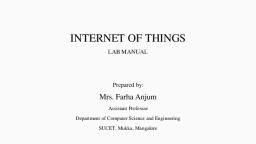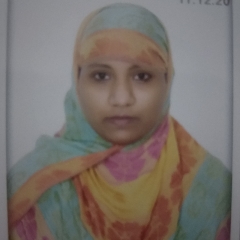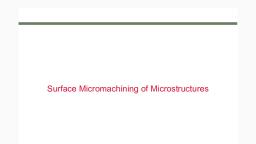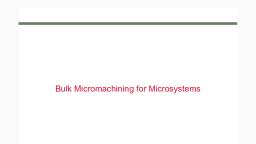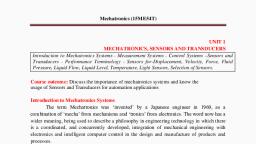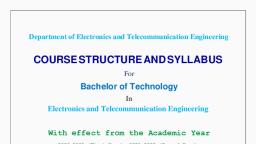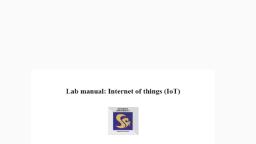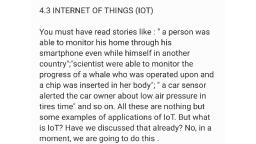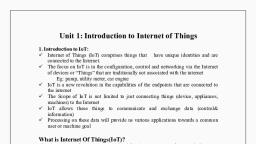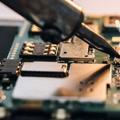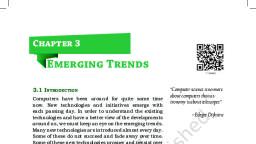Page 1 :
Prime Faraday Technology Watch, , An Introduction to MEMS (Micro-electromechanical Systems), , MEMS has been identified as one of the most promising technologies for, the 21st Century and has the potential to revolutionize both industrial and, consumer products by combining silicon-based microelectronics with, micromachining technology. Its techniques and microsystem-based, devices have the potential to dramatically affect of all of our lives and the, way we live., This report presents a general introduction to the field of MEMS, with, emphasis on its commercial applications and device fabrication methods., It also describes the range of MEMS sensors and actuators, the, phenomena that can be sensed or acted upon with MEMS devices, and, outlines the major challenges facing the industry., PRIME Faraday Partnership, , PRIME Faraday Partnership, ISBN 1-84402-020-7, , An Introduction to MEMS, , January 2002
Page 2 :
This title is for sale in paperback at Amazon.co.uk, http://www.amazon.co.uk/exec/obidos/ASIN/1844020207, , Technology Watch titles are written for managers, especially in small, and medium-sized manufacturing companies. They offer a practical, introduction to cutting-edge developments that affect – or likely soon, will affect – the design, development, manufacture and marketing of, PRIME products – products with interdependent mechanical and, electronic (and possibly software) parts., All Technology Watch titles can be downloaded free of charge from, the Prime Faraday Partnership’s Technology Watch website, http://www.primetechnologywatch.org.uk/. Selected titles can be, purchased in paperback from Amazon.co.uk., In addition to market and technology reviews, the Technology Watch, website also provides news cuttings, case studies, an events diary and, details of funding opportunities. The service is sponsored by the DTI, and managed by the PRIME Faraday Partnership, which marries the, academic strengths of Loughborough University and the University of, Nottingham to the technology-transfer expertise of Pera.
Page 3 : An Introduction to MEMS, , Published in 2002 by, PRIME Faraday Partnership, Wolfson School of Mechanical and Manufacturing Engineering, , Loughborough University, Loughborough, Leics LE11 3TU, http://www.primetechnologywatch.org.uk, © 2002 Loughborough University, ISBN 1-84402-020-7, Whilst the advice and information in this publication is believed to be, true and accurate at the time of publication, neither the author nor the, publisher assume any legal responsibility or liability for any error or, omission that may have been made., , Comments on this publication are welcomed. Please send them to, <
[email protected]>, , Prime Faraday Technology Watch – January 2002
Page 4 :
An Introduction to MEMS, , Contents, Page, 1., , Introduction………………………………………………………………………….. 1, , 2., , Micro-electromechanical Systems (MEMS)………………………………………... 1, 2.1 What is MEMS?…………………………………………………………………... 1, 2.2 Definitions and Classifications…………………………………………………… 3, 2.3 History…………………………………………………………………………… 4, 2.4 Applications………………………………………………………………………. 6, 2.4.1 Established MEMS Applications………………………………………………….. 7, 2.4.2 New MEMS Applications…………………………………………………………11, 2.5 MEMS Market……………………………………………………………………14, 2.6 Miniaturization Issues…………………………………………………………… 16, , 3., , MEMS Fabrication Methods……………………………………………………….. 17, 3.1 Photolithography………………………………………………………………… 17, 3.2 Materials for Micromachining……………………………………………………18, 3.2.1 Substrates………………………………………………………………………… 18, 3.2.2 Additive Films and Materials……………………………………………………..19, 3.3 Bulk Micromachining…………………………………………………………….20, 3.3.1 Wet Etching……………………………………………………………………….20, 3.3.2 Dry Etching………………………………………………………………………. 21, 3.4 Surface Micromachining………………………………………………………… 21, 3.4.1 Fusion Bonding……………………………………………………………………23, 3.5 High-Aspect-Ratio-Micromachining……………………………………………. 23, 3.5.1 LIGA……………………………………………………………………………... 23, 3.5.2 Laser Micromachining…………………………………………………………… 24, 3.6 Computer Aided Design………………………………………………………….24, 3.7 Assembly and System Integration……………………………………………….. 25, 3.8 Packaging………………………………………………………………………... 27, 3.8.1 Multi-Chip Modules………………………………………………………………28, 3.8.2 Passivation and Encapsulation…………………………………………………… 29, 3.9 Foundry Services…………………………………………………………………29, , 4., , MEMS Transducers………………………………………………………………… 30, 4.1 Mechanical Transducers………………………………………………………….31, 4.1.1 Mechanical Sensors……………………………………………………………….31, 4.1.2 Mechanical Actuators……………………………………………….…………… 32, 4.2 Radiation Transducers…………………………………………………………… 34, 4.2.1 Radiation Sensors………………………………………………………………... 34, 4.2.2 Radiation (Optical) Actuators……………………………………………………. 34, 4.3 Thermal Transducers……………………………………………………………..35, 4.3.1 Thermal Sensors…………………………………………………………………..35, 4.3.2 Thermal Actuators……………………………………………………………..….35, 4.4 Magnetic Transducers…………………………………………………………… 36, 4.4.1 Magnetic Sensors………………………………………………………………… 36, 4.4.2 Magnetic Actuators…………………………………………………………….… 37, 4.5 Chemical and Biological Transducers…………………………………………… 37, 4.5.1 Chemical and Biological Sensors………………………………………………... 37, 4.5.2 Chemical Actuators……………………………………………………………….39, 4.6 Microfluidic Devices……………………………………………………………. 39, , Prime Faraday Technology Watch – January 2002, , iii
Page 5 :
An Introduction to MEMS, , 5., , Future of MEMS……………………………………………………………………. 41, 5.1 Industry Challenges…………………………………………………………….. 41, 5.2 The Way Ahead………………………………………………………………… 43, , References…………………………………………………………………………………. 44, Appendix A Glossary of Terms……………………………………………………….. 47, Appendix B Sources of MEMS Information and Advice…………………………… 49, , Prime Faraday Technology Watch – January 2002, , iv
Page 6 :
An Introduction to MEMS, , 1. Introduction, This report deals with the emerging field of micro-electromechanical systems, or MEMS., MEMS is a process technology used to create tiny integrated devices or systems that combine, mechanical and electrical components. They are fabricated using integrated circuit (IC) batch, processing techniques and can range in size from a few micrometers to millimetres. These, devices (or systems) have the ability to sense, control and actuate on the micro scale, and, generate effects on the macro scale., The interdisciplinary nature of MEMS utilizes design, engineering and manufacturing, expertise from a wide and diverse range of technical areas including integrated circuit, fabrication technology, mechanical engineering, materials science, electrical engineering,, chemistry and chemical engineering, as well as fluid engineering, optics, instrumentation and, packaging. The complexity of MEMS is also shown in the extensive range of markets and, applications that incorporate MEMS devices. MEMS can be found in systems ranging across, automotive, medical, electronic, communication and defence applications. Current MEMS, devices include accelerometers for airbag sensors, inkjet printer heads, computer disk drive, read/write heads, projection display chips, blood pressure sensors, optical switches,, microvalves, biosensors and many other products that are all manufactured and shipped in, high commercial volumes., MEMS has been identified as one of the most promising technologies for the 21st Century and, has the potential to revolutionize both industrial and consumer products by combining siliconbased microelectronics with micromachining technology. Its techniques and microsystembased devices have the potential to dramatically affect of all of our lives and the way we live., If semiconductor microfabrication was seen to be the first micromanufacturing revolution,, MEMS is the second revolution., This report introduces the field of MEMS and is divided into four main sections. In the first, section, the reader is introduced to MEMS, its definitions, history, current and potential, applications, as well as the state of the MEMS market and issues concerning miniaturization., The second section deals with the fundamental fabrication methods of MEMS including, photolithography, bulk micromachining, surface micromachining and high-aspect-ratio, micromachining; assembly, system integration and packaging of MEMS devices is also, described here. The third section reviews the range of MEMS sensors and actuators, the, phenomena that can be sensed or acted upon with MEMS devices, and a brief description of, the basic sensing and actuation mechanisms. The final section illustrates the challenges, facing the MEMS industry for the commercialisation and success of MEMS., , 2., , Micro-electromechanical Systems (MEMS), , 2.1 What is MEMS?, Micro-electromechanical systems (MEMS) is a process technology used to create tiny, integrated devices or systems that combine mechanical and electrical components. They are, fabricated using integrated circuit (IC) batch processing techniques and can range in size from, a few micrometers to millimetres. These devices (or systems) have the ability to sense,, control and actuate on the micro scale, and generate effects on the macro scale., , Prime Faraday Technology Watch – January 2002, , 1
Page 7 :
An Introduction to MEMS, , MEMS, an acronym that originated in the United States, is also referred to as Microsystems, Technology (MST) in Europe and Micromachines in Japan. Regardless of terminology, the, uniting factor of a MEMS device is in the way it is made. While the device electronics are, fabricated using ‘computer chip’ IC technology, the micromechanical components are, fabricated by sophisticated manipulations of silicon and other substrates using, micromachining processes. Processes such as bulk and surface micromachining, as well as, high-aspect-ratio micromachining (HARM) selectively remove parts of the silicon or add, additional structural layers to form the mechanical and electromechanical components. While, integrated circuits are designed to exploit the electrical properties of silicon, MEMS takes, advantage of either silicon’s mechanical properties or both its electrical and mechanical, properties., In the most general form, MEMS consist of, mechanical, microstructures,, microsensors,, microactuators and microelectronics, all integrated, onto the same silicon chip., This is shown, schematically in Figure 1., , Figure 1. Schematic illustration of, MEMS components., , Microsensors detect changes in the system’s, environment by measuring mechanical, thermal,, magnetic, chemical or electromagnetic information, or phenomena., Microelectronics process this, information and signal the microactuators to react, and create some form of changes to the environment., , MEMS devices are very small; their components are usually microscopic. Levers, gears,, pistons, as well as motors and even steam engines have all been fabricated by MEMS (Figure, 2). However, MEMS is not just about the miniaturization of mechanical components or, making things out of silicon (in fact, the term MEMS is actually misleading as many, micromachined devices are not mechanical in any sense). MEMS is a manufacturing, technology; a paradigm for designing and creating complex mechanical devices and systems, as well as their integrated electronics using batch fabrication techniques., , Figure 2. (a) A MEMS silicon motor together with a strand of human hair [1], and (b), the legs of a spider mite standing on gears from a micro-engine [2 - Sandia National, Labs, SUMMiT *Technology, http://mems.sandia.gov]., , Prime Faraday Technology Watch – January 2002, , 2
Page 8 :
An Introduction to MEMS, , From a very early vision in the early 1950’s, MEMS has gradually made its way out of, research laboratories and into everyday products. In the mid-1990’s, MEMS components, began appearing in numerous commercial products and applications including accelerometers, used to control airbag deployment in vehicles, pressure sensors for medical applications, and, inkjet printer heads. Today, MEMS devices are also found in projection displays and for, micropositioners in data storage systems. However, the greatest potential for MEMS devices, lies in new applications within telecommunications (optical and wireless), biomedical and, process control areas., MEMS has several distinct advantages as a manufacturing technology. In the first place, the, interdisciplinary nature of MEMS technology and its micromachining techniques, as well as, its diversity of applications has resulted in an unprecedented range of devices and synergies, across previously unrelated fields (for example biology and microelectronics). Secondly,, MEMS with its batch fabrication techniques enables components and devices to be, manufactured with increased performance and reliability, combined with the obvious, advantages of reduced physical size, volume, weight and cost. Thirdly, MEMS provides the, basis for the manufacture of products that cannot be made by other methods. These factors, make MEMS potentially a far more pervasive technology than integrated circuit microchips., However, there are many challenges and technological obstacles associated with, miniaturization that need to be addressed and overcome before MEMS can realize its, overwhelming potential., , 2.2 Definitions and Classifications, This section defines some of the key terminology and classifications associated with MEMS., It is intended to help the reader and newcomers to the field of micromachining become, familiar with some of the more common terms. A more detailed glossary of terms has been, included in Appendix A., Figure 3 illustrates the classifications of microsystems technology (MST). Although MEMS, is also referred to as MST, strictly speaking, MEMS is a process technology used to create, these tiny mechanical devices or systems, and as a result, it is a subset of MST., , Figure 3. Classifications of microsystems technology [3]., , Prime Faraday Technology Watch – January 2002, , 3
Page 9 :
An Introduction to MEMS, , Micro-optoelectromechanical systems (MOEMS) is also a subset of MST and together with, MEMS forms the specialized technology fields using miniaturized combinations of optics,, electronics and mechanics. Both their microsystems incorporate the use of microelectronics, batch processing techniques for their design and fabrication. There are considerable overlaps, between fields in terms of their integrating technology and their applications and hence it is, extremely difficult to categorise MEMS devices in terms of sensing domain and/or their, subset of MST. The real difference between MEMS and MST is that MEMS tends to use, semiconductor processes to create a mechanical part. In contrast, the deposition of a material, on silicon for example, does not constitute MEMS but is an application of MST., Transducer, A transducer is a device that transforms one form of signal or energy into another form. The, term transducer can therefore be used to include both sensors and actuators and is the most, generic and widely used term in MEMS., Sensor, A sensor is a device that measures information from a surrounding environment and provides, an electrical output signal in response to the parameter it measured. Over the years, this, information (or phenomenon) has been categorized in terms of the type of energy domains but, MEMS devices generally overlap several domains or do not even belong in any one category., These energy domains include:, • Mechanical, • Thermal, • Chemical, • Radiant, • Magnetic, • Electrical, , - force, pressure, velocity, acceleration, position, - temperature, entropy, heat, heat flow, - concentration, composition, reaction rate, - electromagnetic wave intensity, phase, wavelength, polarization, reflectance, refractive index, transmittance, - field intensity, flux density, magnetic moment, permeability, - voltage, current, charge, resistance, capacitance, polarization [4,5,6,7], , Actuator, An actuator is a device that converts an electrical signal into an action. It can create a force to, manipulate itself, other mechanical devices, or the surrounding environment to perform some, useful function., , 2.3 History, The history of MEMS is useful to illustrate its diversity, challenges and applications. The, following list summarizes some of the key MEMS milestones [8]., 1950’s, 1958, 1959, , Silicon strain gauges commercially available, “There’s Plenty of Room at the Bottom” – Richard Feynman gives a milestone, presentation at California Institute of Technology. He issues a public challenge by, offering $1000 to the first person to create an electrical motor smaller than 1/64th, of an inch., , Prime Faraday Technology Watch – January 2002, , 4
Page 10 :
An Introduction to MEMS, , 1960’s, 1961, 1967, , First silicon pressure sensor demonstrated, Invention of surface micromachining. Westinghouse creates the Resonant Gate, Field Effect Transistor, (RGT). Description of use of sacrificial material to free, micromechanical devices from the silicon substrate., , 1970’s, 1970, , First silicon accelerometer demonstrated, , 1979, , First micromachined inkjet nozzle, , 1980’s, Early 1980’s: first experiments in surface micromachined silicon. Late 1980’s:, micromachining leverages microelectronics industry and widespread, experimentation and documentation increases public interest., 1982, , Disposable blood pressure transducer, , 1982, , “Silicon as a Mechanical Material” [9]. Instrumental paper to entice the scientific, community – reference for material properties and etching data for silicon., , 1982, , LIGA Process, , 1988, , First MEMS conference, , 1990’s, Methods of micromachining aimed towards improving sensors., 1992, , MCNC starts the Multi-User MEMS Process (MUMPS) sponsored by Defense, Advanced Research Projects Agency (DARPA), , 1992, , First micromachined hinge, , 1993, , First surface micromachined accelerometer sold (Analog Devices, ADXL50), , 1994, , Deep Reactive Ion Etching is patented, , 1995, , BioMEMS rapidly develops, , 2000, , MEMS optical-networking components become big business, , Prime Faraday Technology Watch – January 2002, , 5
Page 11 :
An Introduction to MEMS, , 2.4 Applications, Today, high volume MEMS can be found in a diversity of applications across multiple, markets (Table 1)., Table 1. Applications of MEMS [10]., Automotive, Internal, navigation, sensors, Air conditioning, compressor, sensor, , Electronics, , Medical, , Communications, Fibre-optic, network, components, RF Relays,, switches and, filters, Projection, displays in, portable, communications, devices and, instrumentation, , Defence, , Disk drive heads, , Blood pressure, sensor, , Inkjet printer, heads, , Muscle, stimulators & drug, delivery systems, , Brake force, sensors &, suspension, control, accelerometers, , Projection, screen, televisions, , Implanted, pressure sensors, , Fuel level and, vapour pressure, sensors, , Earthquake, sensors, , Prosthetics, , Voltage controlled, oscillators (VCOs), , Embedded, sensors, , Miniature, analytical, instruments, , Splitters and, couplers, , Data storage, , Pacemakers, , Tuneable lasers, , Aircraft control, , Airbag sensors, "Intelligent" tyres, , Avionics, pressure, sensors, Mass data, storage systems, , Munitions, guidance, Surveillance, , Arming systems, , As an emerging technology MEMS products are centred around technology-product, paradigms rather than product-market paradigms. Consequently, a MEMS device may find, numerous applications across a diversity of industries. For example, the MEMS inkjet printer, head nozzle in widespread use today has developed from a nozzle originally used in nuclear, separation. The commercialisation of selected MEMS devices is illustrated in Table 2., Table 2. Commercialisation of selected MEMS devices [11]., , Product, Pressure sensors, Accelerometers, Gas sensors, Valves, Nozzles, Photonics/displays, Bio/Chemical sensors, RF switches, Rate (rotation) sensors, Micro relays, , Discovery, 1954-1960, 1974-1985, 1986-1994, 1980-1988, 1972-1984, 1980-1986, 1980-1994, 1994-1998, 1982-1990, 1977-1982, , Evolution, 1960-1975, 1985-1990, 1994-1998, 1988-1996, 1984-1990, 1986-1998, 1994-1999, 1998-2001, 1990-1996, 1993-1998, , Cost Reduction/, Application, Expansion, 1975-1990, 1990-1998, 1998-2005, 1996-2002, 1990-1998, 1998-2004, 1999-2004, 2001-2005, 1996-2002, 1998-2006, , Full, Commercialisation, 1990-present, 1998, 2005, 2002, 1998, 2004, 2004, 2005, 2002, 2006, , It is not within the scope of this report to detail all the current and potential applications, within each market segment. Instead, a selection of the most established MEMS devices is, detailed along with the most potentially significant future applications., Prime Faraday Technology Watch – January 2002, , 6
Page 12 :
An Introduction to MEMS, , 2.4.1 Established MEMS Applications, i) Automotive airbag sensor, Automotive airbag sensors were one of the first commercial devices using MEMS. They are, in widespread use today in the form of a single chip containing a smart sensor, or, accelerometer, which measures the rapid deceleration of a vehicle on hitting an object. The, deceleration is sensed by a change in voltage. An electronic control unit subsequently sends a, signal to trigger and explosively fill the airbag., Initial air bag technology used conventional mechanical ‘ball and tube’ type devices which, were relatively complex, weighed several pounds and cost several hundred dollars. They, were usually mounted in the front of the vehicle with separate electronics near the airbag., MEMS has enabled the same function to be accomplished by integrating an accelerometer and, the electronics into a single silicon chip, resulting in a tiny device that can be housed within, the steering wheel column and costs only a few dollars (Figures 4 and 5)., The accelerometer is essentially a capacitive or piezoresistive device consisting of a, suspended pendulum proof mass/plate assembly. As acceleration acts on the proof mass,, micromachined capacitive or piezoresistive plates sense a change in acceleration from, deflection of the plates. The sense plates can be seen in Figure 4., , Figure 4. (a) The first commercial accelerometer from Analog, Devices (1990); its size is less than 1 cm2 (left) [12], and (b), capacitive sense plates, 60 microns deep (right) [13]., , Figure 5. Modern day MEMS accelerometer (left), and, the fully packaged device (right) [12]., The airbag sensor is fundamental to the success of MEMS and micromachining technology., With over 60 million devices sold and in operation over the last 10 years and operating in, such a challenging environment as that found within a vehicle, the reliability of the, technology has been proven. An example of this success is today’s vehicles – the BMW 740i, has over 70 MEMS devices including anti-lock braking systems, active suspension, appliance, Prime Faraday Technology Watch – January 2002, , 7
Page 13 :
An Introduction to MEMS, , and navigation control systems, vibration monitoring, fuel sensors, noise reduction, rollover, detection, seatbelt restraint and tensioning etc. As a result, the automotive industry has, become one of the main drivers for the development of MEMS for other equally demanding, environments. Some of the leading airbag accelerometer manufacturers include Analog, Devices, Motorola, SensorNor and Nippondenso., Accelerometers are not just limited to automotive applications. Earthquake detection, virtual, reality video games and joysticks, pacemakers, high performance disk drives and weapon, systems arming are some of the many potential uses for accelerometers., ii) Medical pressure sensor, Another example of an extremely successful MEMS application is the miniature disposable, pressure sensor used to monitor blood pressure in hospitals. These sensors connect to a, patients intravenous (IV) line and monitor the blood pressure through the IV solution. For a, fraction of their cost ($10), they replace the early external blood pressure sensors that cost, over $600 and had to be sterilized and recalibrated for reuse. These expensive devices, measure blood pressure with a saline-filled tube and diaphragm arrangement that has to be, connected to an artery with a needle., , Figure 6. Schematic illustration of a piezoresistive pressure sensor., , The disposable sensor consists of a silicon substrate which is etched to produce a membrane, and is bonded to a substrate (Figure 6). A piezoresistive layer is applied on the membrane, surface near the edges to convert the mechanical stress into an electrical voltage. Pressure, corresponds to deflection of the membrane. The sensing element is mounted on a plastic or, ceramic base with a plastic cap over it, designed to fit into a manufacturer’s housing (Figure, 7). A gel is used to separate the saline solution from the sensing element., As in the case of the MEMS airbag sensor, the disposable blood pressure sensor has been one, of the strongest MEMS success stories to date. The principal manufacturers being Lucas, Novasensor, EG & G IC Sensors and Motorola with over 17 millions units per year. More, recently, the technology from the blood pressure sensor has been taken a step further in the, development of the catheter-tip pressure sensor. This considerably smaller MEMS device is, designed to fit on the tip of a catheter and measure intravascular pressure (its size being only, 0.15 mm x 0.40 mm x 0.90 mm)., Pressure sensors are the biggest medical MEMS application to date with the accelerometer, MEMS a distant second. Although the majority of these accelerometer applications remain, under development, advanced pacemaker designs include a MEMS accelerometer device that, measures the patient’s activity. The technology, similar to that found in the airbag sensor,, enables the patient’s motion and activity to be monitored and signals the pacemaker to adjust, its rate accordingly., , Prime Faraday Technology Watch – January 2002, , 8
Page 14 :
An Introduction to MEMS, , Figure 7. (a) Disposable blood pressure sensor connected to an IV line [14],, (b) disposable blood pressure sensors (as shipped) [15], and (c) intracardial, catheter-tip sensors for monitoring blood pressure during cardiac, catheterisation, shown on the head of a pin [13]., , iii) Inkjet printer head, One of the most successful MEMS applications is the inkjet printer head, superseding even, automotive and medical pressure sensors. Inkjet printers use a series of nozzles to spray, drops of ink directly on to a printing medium. Depending on the type of inkjet printer the, droplets of ink are formed in different ways; thermally or piezoelectrically., Invented in 1979 by Hewlett-Packard, MEMS thermal inkjet printer head technology uses, thermal expansion of ink vapour. Within the printer head there is an array of tiny resistors, known as heaters. These resistors can be fired under microprocessor control with electronic, pulses of a few milliseconds (usually less than 3 microseconds). Ink flows over each resistor,, which when fired, heat up at 100 million ºC per second, vaporizing the ink to form a bubble., As the bubble expands, some of the ink is pushed out of a nozzle within a nozzle plate,, landing on the paper and solidifying almost instantaneously. When the bubble collapses, a, vacuum is created which pulls more ink into the print head from the reservoir in the cartridge, (Figure 8). It is worth noting there are no moving parts in this system (apart from the ink, itself) illustrating that not all MEMS devices are mechanical., , Figure 8. Thermal inkjet print technology [16]., Prime Faraday Technology Watch – January 2002, , 9
Page 15 :
An Introduction to MEMS, , A piezoelectric element can also be used to force the ink through the nozzles (Figure 9). In, this case, a piezoelectric crystal is located at the back of the ink reservoir of each nozzle. The, piezoelectric crystal element receives a very small electric charge causing it to vibrate. When, it vibrates inwards it forces a tiny amount of ink out of the nozzle. As the element vibrates, back out, it pulls some more ink into the reservoir to replace the ink that was sprayed out., Epson patented this technology but it is also used by the majority of the other leading printer, companies., MEMS has enabled more and more heating elements and piezoelectric crystals to be, incorporated into a printer head. Early printers had 12 nozzles with resolutions of up to 92, dpi possible. Today, modern inkjet printers have up to 600 nozzles which can all fire a, droplet simultaneously enabling 1200 dpi. Epson, Lexmark, Hewlett-Packard, Olivetti, Xerox, and Canon all use a form of these MEMS in their inkjet printers. Over 350 million units were, sold in 2000., , Figure 9. Thermal inkjet print technology [16]., , iv) Overhead projection display, One of the early MEMS devices used for a variety of display applications is the Digital, Micromirror Device (DMD) from Texas Instruments. The device contains over a million tiny, pixel-mirrors each measuring 16 µm by 16 µm and capable of rotating by ±10º, over 1000, times a second (Figure 10). Light from a projection source impinges on the pupil of the lens, (or mirror) and is reflected brightly onto a projection screen. DMD’s are used for displays for, PC projectors, high definition televisions (HDTV’s) and for large venues such as digital, cinemas where traditional liquid crystal technology cannot compete. MEMS has enabled the, micromirrors to be only 1 µm apart, resulting in an image taking up a larger percentage (89, percent) of space on the DMD chip's reflective surface, as compared to a typical LCD (12 to, 50 percent). This reduces the pixelation and produces an overall sharper and brighter image., Today over 30 manufacturers use the DMD (Kodak being the largest) and over 500,000, systems have been shipped., , Prime Faraday Technology Watch – January 2002, , 10
Page 16 :
An Introduction to MEMS, , Figure 10. The MEMS Digital Micromirror Device, (DMD) [17]., , 2.4.2 New MEMS Applications, The experience gained from these early MEMS applications has made it an enabling, technology for new biomedical applications (often referred to as bioMEMS) and wireless, communications comprised of both optical, also referred to as micro-optoelectromechanical, systems (MOEMS), and radio frequency (RF) MEMS., i) BioMEMS, Over the past few years some highly innovative products have emerged from bioMEMS, companies for revolutionary applications that support major societal issues including DNA, sequencing, drug discovery, and water and environmental monitoring. The technology, focuses on microfluidic systems as well as chemical testing and processing and has enabled, devices and applications such as ‘lab-on-a-chip’, chemical sensors, flow controllers,, micronozzles and microvalves to be produced. Although many devices are still under, development, microfluidic systems typically contain silicon micromachined pumps, flow, sensors and chemical sensors. They enable fast and relatively convenient manipulation and, analysis of small volumes of liquids, an area of particular interest in home-based medical, applications where patients can use devices to monitor their own conditions, such as blood, and urine analysis., One example of a new bioMEMS device is the microtitreplate on which a number of cavities, can be simultaneously filled accurately and repeatably by capillary force (Figure 11a). This is, a relatively simple MEMS product in the form of a piece of plastic with high-aspect-ratio, micromachined microchannels and is classified as a ‘lab-on-a-chip’ product. Its dimensions, are only 20 mm x 37 mm x 3 mm and enables automatic filling of 96 microwells by the use, of capillary action., , Prime Faraday Technology Watch – January 2002, , 11
Page 17 :
An Introduction to MEMS, , Figure 11. (a) Micromachined microtitreplate with 96 cavities filled by capillary, force [18,19], and (b) a bioMEMS device actuated with ‘microteeth’ to trap,, hold and release single red blood cells (unharmed). The little balls in the, channels are red blood cells [2]., , Future lab-on-a-chip technology may include implantable ‘pharmacy-on-a-chip’ devices to, carefully release drugs into the body from tiny chambers embedded in a MEMS device,, eliminating the need for needles or injections. The delivery of insulin is one such application,, as is the delivery of hormones, chemotherapy drugs and painkillers. First generation devices, are being developed which release their medication upon signals from an outside source,, wired through the skin. Proposed second generation devices may be wireless and third, generation MEMS chips could interact with MEMS sensors embedded in the body to respond, to the body’s own internal signals., One of the most recent MEMS microfluidic devices to emerge from development laboratories, incorporates a ‘Pac-Man’-like microstructure that interacts with red blood cells (Figure 11b)., The device from Sandia National Laboratories, U.S.A, contains silicon microteeth that open, and close like jaws trapping and releasing a single red blood cell unharmed as it is pumped, through a 20 µm channel. The ultimate goal of this device is to puncture cells and inject them, with DNA, proteins, or pharmaceuticals to counter biological or chemical attacks, gene, imbalances and natural bacterial or viral infections., ii) MOEMS, Optical communications has emerged as the only practical means to address the network, scaling issues created by the tremendous growth in data traffic caused by the rapid rise of the, Internet. Current routing technology slows the information (or bit) flow by transforming, optical signals into electronic information and then back into light before redirecting it. All, optical networks offer far superior throughput capabilities and performance over traditional, electronic systems., The most significant MOEMS device products include waveguides, optical switches, cross, connects, multiplexers, filters, modulators, detectors, attenuators and equalizers. Their small, size, low cost, low power consumption, mechanical durability, high accuracy, high switching, density and low cost batch processing of these MEMS-based devices make them a perfect, solution to the problems of the control and switching of optical signals in telephone networks., An example of a MEMS optical connect is shown in Figure 12. Here a network of 256, MEMS micromirrors route information in the form of photons (the elementary particle that, corresponds to an electromagnetic wave) to and from any of 256 input/output optical fibres., , Prime Faraday Technology Watch – January 2002, , 12
Page 18 :
An Introduction to MEMS, , Figure 12. A MEMS optical cross connect consisting of an array of microscopic mirrors, each the size, of a pin head and able to tilt in various directions to steer light [20,21]., , MEMS fabrication processes have reached the stage where mass manufacture of such devices, is now practical. A typical optical switch can cost over $1000, but using MEMS, the same, level of functionality can be achieved for less than a dollar. Agere Systems (previously, known as the microelectronics division of Lucent Technologies), Corning, JDS Uniphase and, Sycamore Networks are some of the leading companies in this field., iii) RF MEMS, RF MEMS is one of the fastest growing areas in commercial MEMS technology. RF MEMS, are designed specifically for electronics in mobile phones and other wireless communication, applications such as radar, global positioning satellite systems (GPS) and steerable antennae., MEMS has enabled the performance, reliability and function of these devices to be increased, while driving down their size and cost at the same time (Figure 13)., , Figure 13. (a) A miniature acoustic resonator, shown in the, foreground, is one-fifth the size of a traditional component used in, mobile phones and other wireless communications devices [22],, and (b) on-chip micro-microphones may make it possible to build, radios on a chip [20,21]., , The technology includes circuit tuning elements (capacitors/inductors, resonators, filters,, microphones and switches). These low-loss ultra-miniature and highly integrative RF, functions can and will eventually replace classical RF elements and enable a new generation, of RF devices. As it can be seen today, if RF MEMS components continue to replace, traditional components in today’s mobile phones, then phones could become extremely small, (the size of wristwatch is not too far away), require little battery power and may even be, cheaper., , Prime Faraday Technology Watch – January 2002, , 13
Page 19 :
An Introduction to MEMS, , 2.5 MEMS Market, The three most well known market studies are the Network of Excellence in Multifunctional, Microsystems (NEXUS) study (1998), the System Planning Corporation (SPC) study (1999), and the Battelle study (1990) and there is discrepancy between each study [23, 24, 25, respectively]. The size of the MEMS market (M3) is contingent on how MEMS is defined, (M3 is shorthand for MEMS, Microsystems and Micromachining and although it is not yet, common, it is used as a reference for the entire MEMS market. Smaller M3 figures are, obtained if MEMS is considered as just micromachining, which is more elemental and at the, device level. Alternatively, much larger M3 figures arise if MEMS is examined at the system, or subsystem level (as in the case of NEXUS). Depending on the study under review, the M3, market today ranges from $4.2 billion to $14.2 billion. Much of the current market centres on, read/write heads for computer disk drives, pressure sensors, inkjet printer heads and, accelerometers. Table 3 provides the NEXUS worldwide M3 market size in 1996 and, forecasts for 2002 for existing MEMS product types., Table 3. Worldwide M3 market size in 1996 and 2002 for existing MEMS product types, in $US millions [23]., 1996, Units, (millions), , $, (millions), , 2002 Units, (millions), , $, (millions), , HDD heads, , 530, , 4500, , 1500, , 12000, , Inkjet print heads, , 100, , 4400, , 500, , 10000, , Heart pacemakers, , 0.5, , 1000, , 0.8, , 3700, , In vitro diagnostics, , 700, , 450, , 4000, , 2800, , 4, , 1150, , 7, , 2000, , Pressure sensors, , 115, , 600, , 309, , 1300, , Chemical sensors, , 100, , 300, , 400, , 800, , Infrared imagers, , 0.01, , 220, , 0.4, , 800, , Accelerometers, , 24, , 240, , 90, , 430, , Gyroscopes, , 6, , 150, , 30, , 360, , Magnetoresistive sensors, , 15, , 20, , 60, , 60, , Microspectrometers, , 0.006, , 3, , 0.15, , 40, , TOTAL, , 1595, , $13,033, , 6807, , $34,290, , Product Types, , Hearing aids, , In the area of emerging MEMS products, Table 4 provides the NEXUS worldwide M3 market, size in 1996 and forecasts for 2002. Drug delivery systems (microfluidic microdosing, systems), lab-on-a-chip devices and MEMS-based optical switches are predicted to reach, billion dollar market segments by 2002., Prime Faraday Technology Watch – January 2002, , 14
Page 20 :
An Introduction to MEMS, , Table 4. Worldwide M3 market size in 1996 and 2002 for emerging MEMS product types, in $US millions [23]., 1996, Units, (millions), , Product Types, Drug delivery systems, Optical switches, Lab on ship, Magneto optical heads, Projection valves, Coil on chip, Micro relays, Micromotors, Inclinometers, Injection nozzles, Anti-collision sensors, Electronic noses, TOTAL, , 1, 1, 0, 0.01, 0.1, 20, 0.1, 1, 10, 0.01, 0.001, 33, , $, (millions), , 2002 Units, (millions), , $ (millions), , 10, 50, 0, 1, 10, 10, 0.1, 5, 10, 10, 0.5, 0.1, $107, , 100, 40, 100, 100, 1, 600, 50, 2, 20, 30, 2, 0.05, 1045, , 1000, 1000, 1000, 500, 300, 100, 100, 80, 70, 30, 20, 5, $4,205, , A more recent market study by NEXUS/Roger Grace Associates, shown in Table 5, estimated, the M3 market to be $14.2 billion in 2000, increasing to $30.4 billion by 2004. This, corresponds to a compounded annual growth rate (CAGR) of 21%. Telecommunications is, forecast to be the major growth area, comprised of both optical MEMS and RF MEMS-based, devices., Table 5. Worldwide shipment of M3 products by application sector for, 2000-2004 in $US millions [23,26]., Application Sector, IT/Peripheral, Medical/Biochemical, Industrial/Automation, Telecommunications, Automotive, Environmental Monitoring, TOTAL, , 2000, $ 8,700, 2,400, 1,190, 130, 1,260, 520, $14,200, , 2004, $13,400, 7,400, 1,850, 3,650, 2,350, 1,750, $30,400, , CAGR(%), 11.5, 32.5, 11.6, 128.1, 16.9, 35.4, 21.0%, , 2.6 Miniaturization Issues, As previously stated, MEMS is not about miniaturization; it is a manufacturing technology, used to create tiny integrated microdevices and systems using IC batch fabrication techniques., Similarly, miniaturization is not just about shrinking down existing devices (although there, have been some classic examples, namely the DENSO Micro-Car as shown in Figure 14); it’s, about completely rethinking the structure of a microsystem., , Prime Faraday Technology Watch – January 2002, , 15
Page 21 :
An Introduction to MEMS, , Figure 14. The DENSO Micro-Car is a miniature version of Toyota’s first passenger car. Fabricated, using MEMS, at 1/1000th the size of the original, it consists of a 0.67 mm magnetic-type working, motor and when supplied with 3 V 20 mA of alternating current through a 18 µm copper wire, the, engine runs at 600 rpm equivalent to 5-6 mm/s [27]., , In order to manufacture a successful MEMS device basic physics and operating principles, including scaling laws need to be fully understood and appreciated at both a macro and, microlevel. Sometimes no advantages in terms of performance, size/weight, reliability and, cost can be gained with a MEMS device. Increased surface area (S) to volume (V) ratios at, microscales have both considerable advantages and disadvantages (Figure 15)., , Figure 15. Effect of miniaturization on surface area and volume., Some of these microlevel issues include:, •, , Friction is greater than inertia. Capillary, electrostatic and atomic forces as well as, stiction at a micro-level can be significant., , •, , Heat dissipation is greater than heat storage and consequently thermal transport, properties could be a problem or, conversely, a great benefit., , •, , Fluidic or mass transport properties are extremely important. Tiny flow spaces are, prone to blockages but can conversely regulate fluid movement., , •, , Material properties (Young’s modulus, Poisson’s ratio, grain structure) and, mechanical theory (residual stress, wear and fatigue etc.) may be size dependent., , •, , Integration with on-chip circuitry is complex and device/domain specific. Lab-on-achip systems components may not scale down comparably., , •, , Miniature device packaging and testing is not straightforward. Certain MEMS sensors, require environmental access as well as protection from other external influences., Testing is not rapid and is expensive in comparison with conventional IC devices., , •, , Cost – for the success of a MEMS device, it needs to leverage its IC batch fabrication, resources and be mass-produced. Hence mass-market drivers must be found to, generate the high volume production., Prime Faraday Technology Watch – January 2002, , 16
Page 22 :
An Introduction to MEMS, , 3. MEMS Fabrication Methods, MEMS fall into three general classifications; bulk micromachining, surface micromachining, and high-aspect-ratio micromachining (HARM), which includes technology such as LIGA (a, German acronym from Lithographie, Galvanoformung, Abformung translated as lithography,, electroforming and moulding)., Conventional macroscale manufacturing techniques e.g. injection moulding, turning, drilling, etc, are good for producing three dimensional (3D) shapes and objects, but can be limited in, terms of low complexity for small size applications. MEMS fabrication, by comparison, uses, high volume IC style batch processing that involves the addition or subtraction of two, dimensional layers on a substrate (usually silicon) based on photolithography and chemical, etching. As a result, the 3D aspect of MEMS devices is due to patterning and interaction of, the 2D layers. Additional layers can be added using a variety of thin-film and bonding, techniques as well as by etching through sacrificial ‘spacer layers’. Figure 16 shows the, potential complexity of a MEMS system by the addition of independent structural layers., , Figure 16. MEMS device complexity by structural layers [2]., 3.1 Photolithography, Photolithography is the photographic technique to transfer copies of a master pattern, usually, a circuit layout in IC applications, onto the surface of a substrate of some material (usually a, silicon wafer)., The substrate is covered with a thin film of some material, usually silicon dioxide (SiO2), in, the case of silicon wafers, on which a pattern of holes will be formed (Figure 17). A thin, layer of an organic polymer, which is sensitive to ultraviolet radiation, is then deposited on, the oxide layer; this is called a photoresist. A photomask, consisting of a glass plate, (transparent) coated with a chromium pattern (opaque), is then placed in contact with the, photoresist coated surface. The wafer is exposed to the ultraviolet radiation transferring the, pattern on the mask to the photoresist which is then developed in a way very similar to the, process used for developing photographic films. The radiation causes a chemical reaction in, the exposed areas of the photoresist of which there are two types; positive and negative., Positive photoresist is strengthened by UV radiation whereas negative photoresists are, Prime Faraday Technology Watch – January 2002, , 17
Page 23 :
An Introduction to MEMS, , weakened. On developing, the rinsing solution removes either the exposed areas or the, unexposed areas of photoresist leaving a pattern of bare and photoresist-coated oxides on the, wafer surface. The resulting photoresist pattern is either the positive or negative image of the, original pattern of the photomask., , Figure 17. Photoresist and silicon dioxide patterns following photolithography [28]., , A chemical (usually hydrochloric acid) is used to attack and remove the uncovered oxide, from the exposed areas of the photoresist. The remaining photoresist is subsequently, removed, usually with hot sulphuric acid which attacks the photoresist but not the oxide layer, on the silicon, leaving a pattern of oxide on the silicon surface. The final oxide pattern is, either a positive or negative copy of the photomask pattern and serves as a mask in, subsequent processing steps., At this point MEMS diverges from traditional IC fabrication. In processing IC devices, the, oxide pattern serves as a mask during the ‘doping’ of the wafer with impurities (such as boron, or phosphorous) that alter the local conduction necessary for microelectronic devices. In, MEMS, the oxide serves as a subsequent mask for either further additional chemical etching, creating deeper 3D pits or new layers on which to build further layers, resulting in an overall, 3D structure or device., , 3.2 Materials for Micromachining, 3.2.1 Substrates, The most common substrate material for micromachining is silicon. It has been successful in, the microelectronics industry and will continue to be in areas of miniaturization for several, reasons:, i), , silicon is abundant, inexpensive, and can be processed to unparalleled purity, , ii) silicon’s ability to be deposited in thin films is very amenable to MEMS, , Prime Faraday Technology Watch – January 2002, , 18
Page 24 :
An Introduction to MEMS, , iii) high definition and reproduction of silicon device shapes using photolithography are, perfect for high levels of MEMS precision, iv) silicon microelectronics circuits are batch fabricated (a silicon wafer contains, hundreds of identical chips not just one), Other crystalline semiconductors including germanium (Ge) and gallium arsenide (GaAs) are, used as substrate materials due to similar inherent features, but silicon is distinguished from, other semiconductors in that it can be readily oxidized to form a chemically inert and, electrically insulating surface layer of SiO2 on exposure to steam., The homogeneous crystal structure of silicon gives it the electrical properties needed in, microelectronic circuits, but in this form silicon also has desirable mechanical properties., Silicon forms the same type of crystal structure as diamond, and although the interatomic, bonds are much weaker, it is harder than most metals. In addition, it is surprisingly resistant, to mechanical stress, having a higher elastic limit than steel in both tension and compression., Single crystal silicon also remains strong under repeated cycles of tension and compression., The crystalline orientation of silicon is important in the fabrication of MEMS devices because, some of the etchants used attack the crystal at different rates in different directions (Figure, 18)., , Figure 18. Low crystallographic index planes of silicon [29]., , Silicon is dominant as a substrate for MEMS but research and development is ongoing with, other non-semiconductor substrate materials including metals, glasses, quartz, crystalline, insulators, ceramics and polymers. The ability to integrate circuitry directly onto the substrate, is currently the underlying issue with today’s MEMS substrate materials; hence the success of, silicon., , 3.2.2 Additive Films and Materials, The range of additive films and materials for MEMS devices is much larger than the types of, possible substrates and includes conductors, semiconductors and insulators such as:, •, •, •, •, •, , silicon - single crystal, polycrystalline and amorphous, silicon compounds (SixNy, SiO2, SiC etc.), metals and metallic compounds (Au, Cu, Al, ZnO, GaAs, IrOx, CdS), ceramics (Al203 and more complex ceramic compounds), organics (diamond, polymers, enzymes, antibodies, DNA etc.) [4], , Prime Faraday Technology Watch – January 2002, , 19
Page 25 :
An Introduction to MEMS, , 3.3 Bulk Micromachining, Bulk micromachining involves the removal of part of the bulk substrate. It is a subtractive, process that uses wet anisotropic etching or a dry etching method such as reactive ion etching, (RIE), to create large pits, grooves and channels. Materials typically used for wet etching, include silicon and quartz, while dry etching is typically used with silicon, metals, plastics, and ceramics., 3.3.1 Wet Etching, Wet etching describes the removal of material through the immersion of a material (typically, a silicon wafer) in a liquid bath of a chemical etchant. These etchants can be isotropic or, anisotropic., Isotropic etchants etch the material at the same rate in all directions, and consequently remove, material under the etch masks at the same rate as they etch through the material; this is known, as undercutting (Figure 19 a and b). The most common form of isotropic silicon etch is HNA,, which comprises a mixture of hydrofluoric acid (HF), nitric acid (HNO3) and acetic acid, (CH3COOH). Isotropic etchants are limited by the geometry of the structure to be etched., Etch rates can slow down and in some cases (for example, in deep and narrow channels) they, can stop due to diffusion limiting factors. However, this effect can be minimized by agitation, of the etchant, resulting in structures with near perfect and rounded surfaces (Figure 19a) [4]., , Figure 19. Isotropic etching with (a) and without (b), agitation, and anisotropic wet etching of (100) and (110), silicon (c and d respectively) [9]., , Anisotropic etchants etch faster in a preferred direction. Potassium hydroxide (KOH) is the, most common anisotropic etchant as it is relatively safe to use. Structures formed in the, substrate are dependent on the crystal orientation of the substrate or wafer. Most such, anisotropic etchants progress rapidly in the crystal direction perpendicular to the (110) plane, and less rapidly in the direction perpendicular to the (100) plane. The direction perpendicular, to the (111) plane etches very slowly if at all. Figures 19c and 19d shows examples of, anisotropic etching in (100) and (110) silicon. Silicon wafers, originally cut from a large, ingot of silicon grown from single seed silicon, are cut according to the crystallographic, plane. They can be supplied in terms of the orientation of the surface plane., Dopant levels within the substrate can affect the etch rate by KOH, and if levels are high, enough, can effectively stop it. Boron is one such dopant and is implanted into the silicon by, a diffusion process. This can be used to selectively etch regions in the silicon leaving doped, areas unaffected., Prime Faraday Technology Watch – January 2002, , 20
Page 26 :
An Introduction to MEMS, , 3.3.2 Dry Etching, Dry etching relies on vapour phase or plasma-based methods of etching using suitably, reactive gases or vapours usually at high temperatures. The most common form for MEMS is, reactive ion etching (RIE) which utilizes additional energy in the form of radio frequency, (RF) power to drive the chemical reaction. Energetic ions are accelerated towards the, material to be etched within a plasma phase supplying the additional energy needed for the, reaction; as a result the etching can occur at much lower temperatures (typically 150º - 250ºC,, sometimes room temperature) than those usually needed (above 1000ºC). RIE is not limited, by the crystal planes in the silicon, and as a result, deep trenches and pits, or arbitrary shapes, with vertical walls can be etched [4]., Deep Reactive Ion Etching (DRIE) is a much higher-aspect-ratio etching method that involves, an alternating process of high-density plasma etching (as in RIE) and protective polymer, deposition to achieve greater aspect ratios (Figure 20)., , Figure 20. Deep Reactive Ion Etching (DRIE) [2,3]., , Etch rates depend on time, concentration, temperature and material to be etched. To date, there are no universally accepted master equations to predict etch performance and behaviour., , 3.4 Surface Micromachining, Surface micromachining involves processing above the substrate, mainly using it as a, foundation layer on which to build. It was initiated in the 1980’s and is the newest MEMS, production technology. Material is added to the substrate in the form of layers of thin films, on the surface of the substrate (typically a silicon wafer). These layers can either by structural, layers or act as spacers, later to be removed, when they are known as sacrificial layers. Hence, the process usually involves films of two different materials: a structural material out of, which the free standing structure is made (generally polycrystalline silicon or polysilicon,, silicon nitride and aluminium) and a sacrificial material, deposited wherever either an open, area or a free standing mechanical structure is required (usually an oxide)., , Prime Faraday Technology Watch – January 2002, , 21
Page 27 :
An Introduction to MEMS, , Figure 21. Surface micromachining of a cantilever beam using a sacrificial layer [2,3]., , These layers (or thin films) are deposited and subsequently dry etched in sequence, with the, sacrificial material being finally wet etched away to release the final structure. Each, additional layer is accompanied by an increasing level of complexity and a resulting difficulty, in fabrication. A typical surface micromachined cantilever beam is shown in Figure 21., Here, a sacrificial layer of oxide is deposited on the silicon substrate surface using a pattern, and photolithography. A polysilicon layer is then deposited and patterned using RIE, processes to form a cantilever beam with an anchor pad. The wafer is then wet etched to, remove the oxide (sacrificial) layer releasing and leaving the beam on the substrate. More, complex MEMS structures can be achieved using structural polysilicon and sacrificial silicon, dioxide, including sliding structures, actuators and free moving mechanical gears. Figures 22, shows the process flow for the fabrication of a micromotor by the commercially available, Multi-User MEMS Process (MUMPS)., , Figure 22. Surface micromachining of a MEMS micromotor using the MultiUser MEMS Process (MUMPS) [30]., , The levels of complexity achievable with MEMS has already been shown in Figure 16. In, this case, five mechanical levels of micromachined polysilicon can be achieved using Sandia, Ultra-Planar Multi-Level Technology (SUMMiT)., The success of the surface micromachining process depends on the ability to successfully, remove all of the sacrificial layers to free the structural elements so that they can be actuated., This step is responsible for curtailing the yield (percentage of the devices on a wafer that, function properly) and reliability of fabricated MEMS due to the phenomenon known as, Prime Faraday Technology Watch – January 2002, , 22
Page 28 :
An Introduction to MEMS, , stiction. Stiction refers to the sticking of structural elements either to the substrate or the, adjacent elements. Capillary forces from rinsing liquids, as well as electrostatic and van der, Waals forces can also produce permanent adhesion after the system has dried., 3.4.1 Fusion Bonding, In order to form more complex and larger MEMS structures, micromachined silicon wafers, can be bonded to other materials in a process known as fusion bonding. It is a technique that, enables virtually seamless integration of multiple layers and relies on the creation of atomic, bonds between each layer either directly (with heating and pressure in the case of glass to, wafer bonding), or through a thin film of silicon dioxide (Figure 23). The resulting composite, has very low residual stress due to matching coefficients of thermal expansion from each, layer. In addition, the mechanical strength of the bond is comparable to that of the adjoining, layers resulting in a very strong composite fabrication technique for enclosed cavities and, channels. High-aspect ratio structural layers can also be bonded to silicon substrates in a, similar manner. Photoresist and polymethylmethacrylate (PMMA) are used as MEMS fusion, bonding media and have proved very successful for the bonding of polyimide [4]., , Figure 23. Formation of sealed cavity using fusion bonding, , 3.5 High-Aspect-Ratio Micromachining, High-aspect-ratio micromachining (HARM) is a process that involves micromachining as a, tooling step followed by injection moulding or embossing and, if required, by electroforming, to replicate microstructures in metal from moulded parts. It is one of the most attractive, technologies for replicating microstructures at a high performance-to-cost ratio and includes, techniques known as LIGA. Products micromachined with this technique include highaspect-ratio fluidic structures such as moulded nozzle plates for inkjet printing and, microchannel plates for disposable microtitreplates in medical diagnostic applications. The, materials that can be used are electroformable metals and plastics, including acrylate,, polycarbonate, polyimide and styrene., 3.5.1 LIGA, LIGA is an important tooling and replication method for high-aspect-ratio microstructures., The technique employs X-ray synchrotron radiation to expose thick acrylic resist of PMMA, under a lithographic mask (see Figure 24 below). The exposed areas are chemically dissolved, and, in areas where the material is removed, metal is electroformed, thereby defining the tool, insert for the succeeding moulding step. LIGA is capable of creating very finely defined, microstructures up to 1000 µm high., LIGA is limited by the need to have access to an X-ray synchrotron facility. A compromise, which combines some features of LIGA with surface micromachining eliminating the need, Prime Faraday Technology Watch – January 2002, , 23
Page 29 :
An Introduction to MEMS, , for exposure to X-rays has been developed and is known as SLIGA (Sacrificial LIGA) [31]., It replaces the thick PMMA photoresist with polyimide as the electroplating mould, thus, enabling compatible conventional IC batch processing. HARM production methods have, provided radically new ways to produce micromachined parts for MEMS devices at relatively, low cost. In particular, techniques such as SLIGA enable the production of MEMS, components with much lower manufacturing infrastructures in terms of investment, facilities, and access to advanced materials and technology., , Figure 24. The LIGA process [3]., , Other microreplication techniques can be combined to generate a preform for the tool insert., These include laser ablation, ultra-violet (UV) lithography and mechanical micromachining,, which includes electric discharge machining (EDM) and diamond milling. EDM is a, relatively new approach that uses machine shop production techniques and offers the, capability to make parts out of most conductive materials. Unfortunately, as a spark erosion, technique, it is slow and not ideal for batch processing but has found many applications for, MEMS prototype production. For example, EDM was used for the micromachining of the, DENSO Micro-car previously shown in Figure 14., 3.5.2 Laser Micromachining, Most laser micromachining processes are not parallel and hence not fast enough for effective, MEMS fabrication. Nonetheless, they have utility in specialty micromachining or making, moulds. Excimer laser micromachining is used particularly for the micromachining of, organic materials (plastics, polymers etc.) as material is not removed by burning or, vaporization. Hence, material adjacent to the machined area is not melted or distorted by, heating effects. Lasers have found other applications in MEMS but only in a limited capacity;, laser drilling, laser annealing and etching are the most common forms., , 3.6 Computer Aided Design, Computer Aided Design (CAD) is generally used in MEMS for the design of, photolithographic masks. This is a straightforward process as MEMS structures are relatively, large in comparison to the sub-micron structures usually associated with silicon chip, components. As well as using CAD for mask design, CAD and finite element analysis (FEA), are important simulation tools for the design of MEMS applications. Unfortunately, to date, Prime Faraday Technology Watch – January 2002, , 24
Page 30 :
An Introduction to MEMS, , there is a lack of adequate advanced software based design tools to fully model, analyse and, simulate MEMS microstructures as well as integrated MEMS/IC devices. This has acted as a, barrier to the development of MEMS devices and systems., One of the most successful and commercially available software design tools today is, MEMCAD, a package from Microcosm Technologies in North Carolina, USA. The, MEMCAD system defines device layout and process, constructs the three dimensional, geometry of the device, assembles a detailed 3D model and analyses device performance as, well as device sensitivity to manufacturing and design variations. MEMS Pro, a package, from Tanner Research in California, enables designers of MEMS to simulate the, growth/deposition, implantation/diffusion and etch steps in a MEMS fabrication process., , 3.7 Assembly and System Integration, The MEMS fabrication process essentially uses the same process as the microelectronics, industry as shown in Figure 25., , Figure 25. Similarities between IC and MEMS microfabrication processes [3]., , Despite the fact that MEMS uses some of the same tools as those used with ICs, the greatest, challenge facing the MEMS industry is system integration between the miniature mechanical, systems and the electronic interface. For the cost-effective production of MEMS devices it is, necessary to combine complex mechanical structures together with microelectronics to form, integrated mechanical and electrical systems on a single chip that can be batch fabricated with, high yield and no additional or subsequent assembly (Figure 26)., , Figure 26. Integration of mechanical structures and microelectronics [2]., , Prime Faraday Technology Watch – January 2002, , 25
Page 31 :
An Introduction to MEMS, , Despite certain successful high volume applications such as the airbag accelerometer and the, disposable blood pressure sensor, high yields are difficult with MEMS devices due to their, mechanical complexity and their integration with the necessary microelectronics. Assembling, and packaging complex microscopic parts is also extremely difficult. As conventional, automated assembly and packaging is not suited to such a microlevel, to date, many MEMS, devices require individual handling. As a result, the final cost of a device may be up to 100, times the cost of the actual component. For their successful commercial production these, challenges have to be overcome., Over the years different approaches have been developed for the integration of the electronic, interface. These include hybrid integration using conventional wire bonding and flip-chips, (described later in Section 3.8) and monolithic integration. Monolithic integration offers, superior system integration performance to hybrid systems but at an overall higher price in, terms of involved technology and processing. Monolithic integration can be carried out in, three ways:, i) IC before MEMS, Monolithic integration by IC first has proved to be successful and relatively cheap; an, example is the technology in Texas Instrument’s DMD (Figure 10). The process relies, heavily on bulk micromachining and the addition of new layers through electroplating. It is a, relatively simple integrated system but suffers from residual stresses within the device, materials. To date, refractory metals need to be used within the IC components in order to, withstand the high temperature annealing cycles required to relieve the stress in structural, polysilicon., ii) Mixed MEMS-IC fabrication, A typical example of MEMS and microelectronics being fabricated side by side is the airbag, accelerometer (Figures 4 and 5). Monolithic processing of this device as well as the reduced, number of parts enable a very compact device with high reliability at a very low cost. The, trade-off lies within its complexity as this process leads to a very rigid and constrained, process flow which is expensive, thus requiring very high volumes., iii) MEMS fabricated prior to IC, The most promising monolithic integration technique includes fabricating the MEMS device, prior to the microelectronics. Using technology known as iMEMS (Integrated Microelectromechanical Systems) patented by Sandia National Laboratories, USA, MEMS, components are fabricated in trenches on a silicon substrate and then the standard electronics, are processed onto the same substrate as shown in Figure 27 [2]., , Prime Faraday Technology Watch – January 2002, , 26
Page 32 :
An Introduction to MEMS, , Figure 27. Integrated MEMS/IC (iMEMS) technology developed at, Sandia National Laboratories for the monolithic integration of IC control, circuits and MEMS sensors and actuators on the same silicon chip. To, handle the differences in surface topography, the MEMS components are, fabricated in a shallow trench below the wafer surface prior to IC, processing [2]., , A significant improvement in device functionality and a high level of integration can be, obtained by integrating the control circuits and MEMS devices on the same silicon chip., Benefits of trench integration include smaller, faster, less costly, lower power and higher, sensitivity integrated systems. There are no real trade-offs with the technology except the, potential for more parasitic noise from interconnects on the chip., , 3.8 Packaging, The proper operation of MEMS devices depends critically upon the ‘clean’ environment, provided by the package and is considered an enabler for the commercialisation of MEMS., Packaging of microsensors presents special problems as part of the sensor requires, environmental access while the rest may require protection from environmental conditions, and handling (Figure 28)., , Figure 28. Schematic illustration of the packaging role of a MEMS microsensor [32]., , Although there is no generic package for a MEMS device, the package should:, •, •, •, •, •, •, , provide protection and be robust enough to withstand its operating environment, allow for environmental access and connections to physical domain (optical fibres,, fluid feed lines etc.), minimize electrical interference effects from inside and outside the device, dissipate generated heat and withstand high operating temperatures (where necessary), minimize stress from external loading, handle power from electrical connection leads without signal disruption, Prime Faraday Technology Watch – January 2002, , 27
Page 33 :
An Introduction to MEMS, , The most commonly used packages for sensors are usually based on derivatives of, conventional semiconductor packages including plastic, ceramic and metal can packages, (Figure 29)., , Figure 30. Types of traditional IC packaging [32]., Each of these packages has been adapted in one form or another for the packaging of silicon, sensors. Since the substrate on many integrated circuits requires an electrical connection to, bias it, sensor dies are usually mounted to a die attach pad in the package using a conductive, bond. The die attach pad is typically joined to a metal lead frame with wire bonds providing, the electrical connections to the lead frame fingers. Various bonding media include AuSi, eutectic bonding, epoxy bonding (conductive or insulating depending on filler material) and, glass usually loaded with silver. The package is subsequently formed by plastic moulding (as, in the case of moulded plastic packages), sealed ceramic or metal caps (ceramic packages), or, with a brazed metal cap to the base of a metal package., Wire bonding is still the most common technique for electrically connecting the die and, consists of two main technologies; ultrasonic and thermosonic, their difference being in the, mechanical stress applied to the die, the minimum spacing, the used wire alloys and the, possibility of wire adjustment., In flip-chip (FC) technology the chips are bonded face down to a substrate via bumps;, materials include solder, gold, copper and nickel. On heating, the bump material melts and, simultaneously forms all the electrical and mechanical connections between the chip and the, substrate., 3.8.1 Multi-chip Modules, Multi-chip modules (MCMs) enable the integration and packaging of MEMS devices on a, single substrate using traditional thick-film technology. Using ceramics, silicon and printed, circuit board laminates as substrate materials, a variety of die types can be attached to, or, embedded within, the substrate surface. The dies can be interconnected by wire bonds, flip, chips or direct metallisation. The close proximity of each die allows for improved system, performance by providing low-noise wiring and in some cases eliminating unnecessary, interconnections. Three-dimensional variations of this technology are emerging in which dies, and their holding substrates are stacked up on top of each other., , Prime Faraday Technology Watch – January 2002, , 28
Page 34 :
An Introduction to MEMS, , 3.8.2 Passivation and Encapsulation, In order to protect MEMS devices from external contamination as well as enable them to, dissipate generated heat, thin-film coatings can be deposited on the components. In a process, called passivation using plasma enhanced chemical vapour deposition (PECVD), thin-film, coatings of usually silicon dioxide or silicon nitride increase wear resistance and electrical, insulation., Encapsulation is used to protect the sensor die against adverse influences from the, environment like contaminants, mechanical vibration and shock. Common encapsulants are, epoxies, silicones and polyurethanes. These materials need to adhere well to the substrate, be, crack free and minimize induced mechanical stress as well as stresses due to mismatching of, thermal expansion coefficients., , 3.9 Foundry Services, Despite the many similarities between IC and MEMS fabrication, MEMS makers, or, foundries, are still in their adolescence. The widening variety and increasing complexity of, MEMS products make the MEMS foundry business extremely problematic. Although the, fabrication technology is similar, the technology is on a different scale. MEMS are 3D, products in comparison to the 2D level of IC’s. Furthermore, unlike a standard IC foundry,, which performs one or two standard processes, a MEMS foundry performs a wide variety of, processes., From an economic standpoint MEMS foundries share a common characteristic with, semiconductor foundries in that they are often more cost-effective than internal, manufacturing. This is because there is an enormous economy of scale as MEMS foundries, can leverage the cumulative volume from multiple products from multiple companies to, achieve high equipment utilization rates. The most important difference though is that, MEMS produces a mechanical structure that moves and that is significantly more complex, and sensitive than traditional ‘stationery’ IC structures., Expansion of the MEMS market has been restricted by the need for specialized MEMS, engineering knowledge. Until recently, the majority of global research and development, investment has been limited to only a few MEMS foundries. A couple of years ago Cronos, Integrated Microsystems of North Carolina was seen as the leading MEMS foundry in the, field. A spin-off from MCNC and sponsored heavily by DARPA, it developed MUMPS,, offering low-cost manufacturing solutions for prototype and small-series MEMS applications., Other pioneering foundries that were able to leverage the large scale investment already made, in silicon semiconductor fabrication include the Metal Oxide Implementation Service, (MOSIS), operated by the Information Sciences Institute at University of Southern California;, and Sandia National Laboratories, USA, with their SUMMiT technology. Smaller original, foundries still exist but in technology specific areas: MEMSCAP (France) – IC based;, SensorNor (Norway) – bulk micromachining and fusion bonding; GEMAC (Germany) – bulk, micromachining; and Bosch (Germany) – DRIE process. But of these labs, none are able to, handle mass production, certainly on the scale usually associated with the IC chip industry., The lack of market demand for MEMS devices is one of the factors holding the technology, back; the devices can not be manufactured in numbers high enough to bring the price of, MEMS chips down to the point where they make economic sense., , Prime Faraday Technology Watch – January 2002, , 29
Page 35 :
An Introduction to MEMS, , In 1999, the MEMS industry witnessed unprecedented growth and wealth creation as major, venture capital and corporate funding took place. Today, it is no longer necessary to build a, separate fabrication facility to create a MEMS product or invest hundred of millions of dollars, to become a MEMS player. A newly created infrastructure of smaller foundries is now, available to support both emerging and proven MEMS-based applications. Although the, biggest of these foundries are the risk-taking producers of specialized and niche chips such as, Motorola, Sony, Analog Devices and Texas Instruments, there are also many smaller start-up, MEMS foundries which offer more specialized services such as packaging, testing, reliability, analysis etc. Not only do these foundries offer the obvious manufacturing technology and, services to outside customers but they offer the concept of ‘shared learning’ in that lessons, learned when the foundry puts into volume production one product can be applied to the, subsequent volume production of another product. This can occur even when the products are, completely different because there will still be sharing of specific process modules. Today,, there are more than 40-50 MEMS makers or foundries worldwide (though none has broken, away from the pack as in the case, for example, of Intel with computer chips)., , 4. MEMS Transducers, Microsensors and microactuators are at the very core of a MEMS device or system. A, microsensor detects changes in the system’s environment; an ‘intelligent’ part processes the, information detected by the sensor and makes a decision in the form of a signal; and a, microactuator acts on this signal to create some form of changes in the environment., Microelectronic components make up most of the intelligent part of the device and, as an, established technology, will not be discussed here., Sensors and actuators are broadly termed transducers and are essentially devices that convert, one form of energy into another. Many of the MEMS sensors and actuators described in this, section have been developed within the microelectronics industry and do not all involve any, special micromachining techniques; they are based on conventional integrated circuits that,, through inherent mechanisms, sense light, temperature etc. However, many of these can be, enhanced by the use of MEMS., Basic MEMS mechanisms and structures consist of both in-plane and out-of-plane, mechanisms as well as structural members to couple energy between the actuator and sensors, as well as with the physical interface of a mechanical system. Mechanisms such as joints,, linkages, gears and hinges are very typical., This section concentrates on the phenomena that can be sensed or acted upon with MEMS, devices with a brief description of the basic sensing and actuation mechanisms. It is, important to note that although these devices are mechanical and have been categorized in, terms of their sensing domain (e.g. thermal, chemical, radiation), there are many overlaps, and, forms of mechanical transducer can be commonly found as intermediate mechanisms in other, devices., , Prime Faraday Technology Watch – January 2002, , 30
Page 36 :
An Introduction to MEMS, , 4.1 Mechanical Transducers, 4.1.1 Mechanical Sensors, There is a tremendous variety of direct mechanical sensors that have been or could be, micromachined depending on their sensing mechanism (usually piezoresistive, piezoelectric, or capacitive) and the parameters sensed (typically strain, force and displacement)., i) Piezoresistive sensors, As a result of the piezoresistive effect (defined as the change in resistivity of the material with, applied strain), changes in gauge dimension result in proportional changes in resistance in the, sensor. The piezoresistive effect in semiconductors is considerably higher than in traditional, metals, making silicon an excellent strain sensor. MEMS piezoresistors are readily, manufactured using bulk silicon doped with p-type or n-type impurities., ii) Piezoelectric sensors, Piezoelectric sensors utilize the piezoelectric effect in which an applied strain (or force) on a, piezoelectric crystal results in a potential difference across the crystal. Similarly, if the crystal, is subjected to a potential difference, a displacement, or strain, is produced. The effect can be, used to sense mechanical stress (i.e. displacement) and as an actuation mechanism, although, displacements are small even for large voltages. Common piezoelectric materials used for, MEMS applications include quartz, lead zirconate titanate (PZT), polyvinylidene fluoride, (PVDF) and ZnO, PVDF and ZnO being the most common. Silicon is not piezoelectric;, hence a thin film of a suitable material must be deposited on the devices., iii) Capacitive sensors, Capacitive (or electrostatic) sensing is one of the most important (and widely used) precision, sensing mechanisms and includes one or more fixed conducting plates with one or more, moving conducting plates. Capacitive sensing relies on the basic parallel-plate capacitor, equation shown below. As capacitance is inversely proportional to the distance between the, plates, sensing of very small displacements is extremely accurate., C=, , ε εA, d, 0, , r, , where: ε 0 = permittivity of free space = 8.854x10-12 Fm-1, , εr = relative permittivity of material between the plates, A = overlapping plate area (m), d = plate separation (m), , iv) Resonant sensors, MEMS resonant sensors consist of micromachined beams or bridges which are driven to, vibrate at their resonant frequency. They can be attached to membranes or designed to adhere, to a particular substance (as in the case of a biosensor). Movement of the membrane or, increased build-up of the binding substance will affect the resonant frequency and can be, monitored using implanted piezoresistors., Types of mechanical sensor include:, a) Strain gauge - a strain gauge is a conductor or semiconductor that is fabricated on or, bonded directly to the surface to be measured. An example of a polysilicon strain sensor, Prime Faraday Technology Watch – January 2002, , 31
Page 37 :
An Introduction to MEMS, , unable to be fabricated by any other method than MEMS is an implantable piezoresistive, strain gauge to measure forces in heart and brain tissue., b) Accelerometer - accelerometers sense acceleration by using a suspended proof mass on, which external acceleration can act (Figure 30). Upon acceleration (or deceleration), a force, (F=ma) is generated on the proof mass resulting in displacement. The force or displacement, is usually measured by piezoresistive and capacitive methods., , Figure 30. Suspended proof mass in a piezoresistive accelerometer (not to scale)., , c) Gyroscope – a gyroscope is a device that measures the rotation rate and detects inertial, angular motion. As a result it can be found, for example, in transportation, navigation and, missile guidance applications. It relies on measuring the influence of the Coriolis force on a, body in a rotating frame. MEMS gyroscopes typically use vibrating structures because of the, difficulty of micromachining rotating parts with sufficient useful mass., d) Pressure sensor - MEMS pressure sensors are usually based around thin membranes with, sealed gas or vacuum-filled cavities on one side of the membrane and the pressure to be, measured on the other side. Piezoresistive and capacitive membrane deflection measurement, techniques are most commonly used in commercial pressure sensors., , 4.1.2 Mechanical Actuators, i) Electrostatic actuation, The fundamental actuation principle behind electrostatic actuators is the attraction of two, oppositely charged plates. Their use is extensive in MEMS devices, since it is relatively, simple to fabricate closely spaced gaps with conductive plates on opposite sides. For a, parallel plate capacitor, the energy (W) stored at a given voltage (V) is equal to:, 1, where: C=capacitance between the plates, W = CV 2, 2, And the force between the plates is:, , F=, , ∂W 1 ∂C 2, =, V, ∂x 2 ∂x, , Comb-drive-type actuators make use of a large number of fine interdigitated fingers that are, actuated by applying a voltage between them (Figure 31). As the capacitance is related to, area, the greater the number of fingers, the larger the force that can be generated by the, actuator., , Prime Faraday Technology Watch – January 2002, , 32
Page 38 :
An Introduction to MEMS, , Figure 31. Comb-drive electrostatic actuator concept [2,33]., , Electrostatic rotary motors are another good example of the success of MEMS sacrificial, oxide/polysilicon techniques. They rely on a central freely-moving rotor with surrounding, capacitive plates that can be driven in correct phase to cause the rotor to turn. Harmonic or, ‘wobble’ motors rely on the principle of a rotor turning in a slightly larger stator ring, such, that it ‘wobbles’ around the central axis as it rotates (Figure 32). Reduction of sliding friction, and increased electrostatic forces can be achieved with these motors., , Figure 32. A MEMS electrostatic ‘wobble’ motor [30]., , ii) Piezoelectric actuation, As previously described, the piezoelectric effect can be used in both sensors and actuators. In, piezoelectric actuation, the electrically induced displacement (or strain) is proportional to the, applied potential difference. Despite small displacements, relatively high forces (in the region, of tens of MPa) can be achieved using lower voltages than those required for comparable, electrostatic actuation. It should be noted, however, that it is dependent on the geometry of, the device components. The main disadvantages of piezoelectric actuation include high, complexity of fabrication, as well as small actuation displacements. Larger displacements can, be achieved using multiple piezoelectric layers known as piezoelectric bimorphs. Most, MEMS piezoelectric actuation is used where small strains are required (for example, the tip of, a scanning tunnelling microscope) [4]., Prime Faraday Technology Watch – January 2002, , 33
Page 39 :
An Introduction to MEMS, , 4.2 Radiation Transducers, 4.2.1 Radiation Sensors, Radiation sensors cover ionising radiation as well as visible light, infra-red (IR) and ultraviolet (UV) radiation. Current ionising radiation sensors for high-energy particles and X-rays, include Geiger-Müller (GM) tubes and scintillators and although they have not been realized, using MEMS, their miniaturization is potentially feasible. Sensors for visible, IR and UV, radiation are generally categorized as either direct or indirect. Direct optical sensors detect, photons and result in an electronic signal. Indirect sensors convert the optical signals into an, intermediate energy form (e.g. thermal or chemical), which is then measured electrically., There are a wide variety of both direct and indirect sensors and only the most common will be, described here., i) Photodiodes, A photodiode is a semiconductor device for measuring light intensity based on the, photoconductive effect (increase in conductivity of a semiconductor on exposure to light)., Photodiodes are junction-based photoelectrodes which have a p-n junction. When visible or, near infra-red light falls on the device, additional charge carriers are generated resulting in, increased current flow., ii) Charge-coupled devices, Charge-coupled devices (CCDs) are one of the most common photodetectors used in, handheld video recorders and many other consumer applications. They consist of a metal gate, (electrode) above a dielectric and a semiconductor substrate. This forms a metal oxide, semiconductor (MOS) capacitor, the charge on which arises from photogenerated carriers., CCDs can be linear or made up of arrays of metal-insulator-semiconductor sensors arranged, so that photo-generated charge can be stored and transferred between elements by an, appropriate variation of control voltages applied to surface electrodes (memory/signal, processing approach)., iii) Pyroelectric sensors, Pyroelectric detectors are an example of indirect optical sensors and are essentially capacitors, whose charge can be altered by illumination or temperature changes. By converting incident, light into heat, which is then measured, pyroelectric sensors have a wide range of applications, in surveillance, military, security consumer markets etc. e.g. human motion detectors., Pyroelectric sensors use piezoelectric and ferroelectric materials (varying dielectric constant, with applied voltage). ZnO is the most common in MEMS devices., 4.2.2 Radiation (Optical) Actuators, The two most common forms of optical actuation include light emitting diodes and light, modulators such as liquid crystal displays and reflective micromechanical light modulators, (technology used in Texas Instrument’s DMD projection system)., Optical devices can either be active or passive; active devices include laser emitting diodes,, photodiodes and optical switches. Passive devices include couplers, mirrors, wavelength, division multiplexers, polarisers etc. Their application is important in both optical MEMS, Prime Faraday Technology Watch – January 2002, , 34
Page 40 :
An Introduction to MEMS, , devices and integrated optics to enable the control and analysis of optical acquired data. A, brief selection of optical MEMS components includes:, •, , optical waveguides to route optical energy from one region to another. MEMS, techniques are commonly employed to enable waveguide-to-photodiode coupling., , •, , fibre-optic couplers incorporate micromachined grooves and channels as mechanical, couplings for fibre-optic components. Anisotropic wet etching, DRIE and HARM, methods are typically used., , •, , micromirrors with flawless surfaces can be achieved using anisotropic etching to yield, perfect crystal plane surfaces., , 4.3 Thermal Transducers, 4.3.1 Thermal Sensors, i) Thermo-mechanical sensors, Thermo-mechanical sensing (and actuation) utilize the fact that all materials have a, coefficient of thermal expansion. Consequently, if two different materials are sandwiched, together and undergo a temperature change, movement in the sandwich assembly would, occur. This is the basis for the common bimetallic (or thermal bimorph) sensing and, actuation., ii) Thermoresistive sensors, Thermoresistive sensors rely on the fact that the resistivity, ρ , of most materials changes with, temperature and is shown by the equation ρ = R(1 + aT = bT 2 ) where R is the resistivity of the, material at a reference temperature, T (ºC), and a and b are constants specific to the material, being used. The rate of change of resistance with temperature is known as the temperature, coefficient of resistance. Most common materials exhibit an increase in resistance with, temperature (e.g. platinum is particularly linear with temperature). Certain materials – for, example, carbon, some ceramics and most semiconductors used in thermoresistors or, ‘thermistors’ – exhibit a decrease in resistance with increasing temperature. They are not as, linear as platinum, but often cheaper to fabricate and easier to integrate with circuitry in, MEMS devices., iii) Thermocouples, The thermocouple is probably the most common temperature transducer. It consists of a, junction between two different materials and measures the temperature-dependent voltage that, arises across the junction. Semiconductor materials often exhibit a better thermoelectric, effect than metals. Thermocouples have been used in a wide variety of MEMS sensors in an, array arrangement referred to as a thermopile., 4.3.2 Thermal Actuators, Thermal actuation in MEMS is usually as a direct result of incorporating tiny heaters, or, resistors. These resistors can be controlled to locally heat specific areas or layers as in the, case of a bilayer actuator. As already detailed, basic thermal actuation utilizes the difference, , Prime Faraday Technology Watch – January 2002, , 35
Page 41 :
An Introduction to MEMS, , in thermal coefficients for expansion of two bonded materials and is referred to as thermal, bimorph actuation. A typical thermal bimorph actuator is shown in Figure 33., , Figure 33. Example of a MEMS thermal bimorph actuator [34]., , This can be applied to a volume of fluid (liquid or gases) in sealed cavities with a thin, membrane as a wall. By incorporating a heater the liquid can be heated causing it to expand, and deform the membrane outwards. Large forces can be achieved using thermally actuated, devices but power consumption can be high and it can take time for material to cool to its, original activation state., i) Shape memory alloy actuation, Shape memory alloys (SMAs) exhibit considerable changes in their length (contraction) when, heated. These include titanium/nickel alloys, of which some, once mechanically deformed,, would return to their original undeformed state when heated. Being conductive they can be, heated simply by passing a current through them., , 4.4 Magnetic Transducers, 4.4.1 Magnetic Sensors, Most MEMS magnetic sensors are based on the Hall effect. They rely on the production of an, electric field across a material through which an electric current is flowing and where a, magnetic field is acting. The force applied to the charge carriers by the electric field exactly, balances a force from the magnetic field called the Lorentz force. Other ways to sense, magnetic fields use optical sensors that rely on the magneto-optical effect or materials that, exhibit magnetic anisotropy (shape, stress and crystalline anisotropy are particularly common, in MEMS magnetic applications). Magnetic coils are not common in MEMS as they tend to, be 2D, which is not useful for many applications., The most sensitive magnetic sensors include superconducting quantum interference devices, (SQUIDS). The devices can detect diminutive magnetic fluxes produced by the electric, currents in heart and brain tissue. Advances in superconducting thin films as well as MEMS, techniques have accelerated growth with these devices., Most of today’s magnetic sensors are silicon based, not only because of the ease of fabrication, and their ability to be readily integrated with circuitry, but also because their high volume, demand necessitates lower cost., , Prime Faraday Technology Watch – January 2002, , 36
Page 42 :
An Introduction to MEMS, , 4.4.2 Magnetic Actuators, Magnetic actuation is based on the fact that a current-carrying conductor generates a magnetic, field. If this conductor is a wire (or coil) and interacts with another external magnetic field, (e.g. from a similar conductor or coil) a mechanical force is produced., Despite the success of magnetic actuation on a macroscale, such as motors or solenoids,, MEMS magnetic devices are still relatively unestablished. This is due to the fact that 3D, coils are very difficult to fabricate by MEMS. A notable exception is the magnetic read/write, heads for computer disk drives. This device can be classified as both a sensor and actuator in, that it reads from and writes to magnetic media., Choice of magnetic material is limited to those that can be easily micromachined and do not, suffer from high power consumption and heat dissipation. Thin film permanent magnets can, be fabricated using MEMS; LIGA is particularly common for polymers such as polyimide, which can be loaded with a magnetic powder and electroplated. Although attempts have been, made to fabricate MEMS magnetic actuators with wire-bonded coils, often in MEMS devices,, magnetic actuators compete with electrostatic devices which are stronger for the same, volume., i) Magnetostrictive Actuators, These rely on the magnetostrictive effect, which is the change of shape or size of a, ferromagnetic material induced by a magnetic field, for example, the contraction of a nickel, rod under a longitudinal magnetic field., , 4.5 Chemical and Biological Transducers, 4.5.1 Chemical and Biological Sensors, Chemical and biological sensors encompass a large and wide variety of devices that interact, with solids, gases and liquids of all types and are therefore extremely diverse and, interdisciplinary. They are different from previously described sensors in that they must, directly interact with a chemical medium to connect the chemical and electrical domains., Hence they require ‘openings’ within their packaging to enable this interaction (like pressure, sensors)., Most chemical and biological sensors do not require extremely sophisticated micromachining, but can require considerable interdisciplinary knowledge and sophistication for their actual, use. Chemical sensors must be very highly selective in order to make such identifications, among compounds without falsely responding to potential interfering species., Chemical sensors can be categorized in many ways including passive chemical sensors, work, function based systems and electrochemical transducers. Passive chemical sensors include:, •, , Chemiresistors measure the resistance of a chemically sensitive layer between two, electrical contacts., Sensitivity can be increased using more micromachined, electrodes., , Prime Faraday Technology Watch – January 2002, , 37
Page 43 :
An Introduction to MEMS, , •, , Chemicapacitors are similar to chemiresistors but the capacitance of the sensitive layer, is measured. Chemicapacitors have found application in sensing humidity., , •, , Chemomechanical sensors rely on direct chemical-to-mechanical transduction (for, example, the expansion of a thin-film polymer in the presence of a substance being, analysed)., , •, , Calorimetric sensors measure heat generated by chemical reactions., , i) Work function based sensors, This class of sensors, including the ion sensitive field effect transistor (ISFET) and the metal, oxide semiconductor field effect transistor (MOSFET), utilizes metal-insulator-semiconductor, junctions and the fact that the work function of the material at the interfaces can be, chemically modulated. The ISFET was developed as a direct result of the fact that metaloxide-semiconductor transistors were so sensitive to surface contaminants during their, manufacture. As a large proportion of chemical sensors are based on the ISFET, a more, detailed description of their operation is outlined., ISFETs sense the concentration or activity level of a particular ion in solution. The ISFET is, a derivative of a common electronic component called a MOSFET. This consists of a silicon, semiconductor substrate (doped with impurities to make it p-type) and two electrical contacts, (source and drain) doped with impurities so that negatively charged electrons are the main, carriers in these small n-type silicon regions. A small distance separates source from drain, (Figure 34). Overlaying the substrate between the source and drain is a silicon dioxide, insulator which itself is overlaid with a metal electrode called a gate. When a potential is, applied to the gate of the MOSFET, the induced electrical field changes the freedom with, which the current flows between the source and the drain. In the case of an ISFET however,, there is no gate electrode and the insulator is in direct contact with an electrolyte solution to, be measured. With the ISFET, electric current flows from the source to the drain via a, channel. As in the MOSFET the channel resistance depends on the electric field, perpendicular to the direction of the current. Also it depends on the potential difference over, the gate oxide. Therefore the source-drain current is influenced by the interface potential at, the oxide/aqueous junction. When SiO2 is used as the insulator, the chemical nature of the, interface oxide is reflected in the measured source-drain current. With the selection of other, appropriate insulator material, such as silicon nitride or aluminium oxide, hydrogen ions will, reside at the surface of the insulator in proportion to the pH. Their positive charge produces, an electric field that modulates the current between the source and drain. In order to quantify, this effect, the control voltage is measured that must be applied (via a reference electrode) to, maintain the drain-source current at a constant value., The chemical sensitivity of the ISFET is completely controlled by the properties of the, electrolyte/insulator interface. One significant problem in the design and fabrication of, ISFETs is ensuring that the selective membrane adheres to the device. If the integrity of the, membrane is compromised, then the device is useless., , Prime Faraday Technology Watch – January 2002, , 38
Page 44 :
An Introduction to MEMS, , Figure 34. Schematic diagram of an MOSFET and ISFET [35]., , ii) Biosensors, Biosensors is the term used for a whole class of sensors that utilize a biochemical reaction to, determine a specific compound. A biosensor is generally a transducer combined with an, immobilized enzyme or cell to monitor a specific change in the microenvironment. Typically,, an enzyme, antibody, polysaccharide or nucleic acid is used to interact with the substance to, be measured. The sensor itself can vary but a form of ISFET is typically used. The probe tip, is immersed in a liquid phase and is in contact with the process either directly or through a, membrane. They have not seen widespread use because as a class they exhibit many, disadvantages including oxidization reactions with product, extreme sensitivity and the need, for regular recalibration (not ideal for implantable devices)., One of the most promising applications of an amperometric enzyme-based biosensor is the, glucose oxidase based sensor for monitoring glucose levels in the blood. This is particularly, important for diabetes and also in the fermentation process., 4.5.2 Chemical Actuators, There is certainly potential to fabricate chemical actuators using MEMS, but to date, there has, been little work in this area with the exception of a few devices using microelectrodes. These, electrochemical transducers are based on the simple electrochemical electrode concept in, which current is transduced from the circuit domain into the chemical domain through, oxidation or reduction of chemical species at the electrode surface. These structures are, amongst the simplest (they can be as simple as a region of bare metal in solution) and play a, major role in biological interfacing (e.g. neurophysiological probes)., , 4.6 Microfluidic Devices, MEMS has many applications in microfluidics with many of the key building blocks such as, flow channels, pumps and valves fabricated using mature micromachining techniques., Chemical analysis, drug delivery, biological sensing, environmental monitoring and many, other applications typically incorporate MEMS microfluidic devices. It should be noted that, in MEMS fluidic devices the type of flow (laminar or turbulent), effect of bubbles, capillary, forces, fluidic resistance and capacitance all have an effect on their final design., Prime Faraday Technology Watch – January 2002, , 39
Page 45 :
An Introduction to MEMS, , i) Flow channels, A wide variety of microfluidic channels have been fabricated using bulk micromachining (wet, and dry etching), surface micromachining and moulding techniques (Figure 35)., , Figure 35. Selection of MEMS channels for microfluidic applications [36,37,38]., , ii) Flow sensors, MEMS flow sensors can be fluid-dependent flow or fluid-independent. In a very basic form,, fluid-dependent flow sensors measure the flow rate by heating a fluid ‘upstream’ and then, recording its temperature ‘downstream’. The flow rate is proportional to the temperature, difference and transit time of the two actions. Fluid-independent flow sensors measure, pressure or force exerted on an object by the fluid. Figure 36 shows an example of a MEMS, bulk drag-force flow sensor. Using a piezoresistive sensing mechanism, flow measurements, are fairly linear; direction and magnitude can be sensed by this method. In addition, fluidindependent flow sensors do not involve any form of heating and hence are more suited to, biological fluid applications., , Figure 36. Micromachined mechanical (drag-force) flow sensor [39]., , iii) Valves, Valves are generally classified as either active or passive depending on whether or not they, have an external power or control source. One of the simplest MEMS valves is the passive, check valve shown in Figure 37., , Figure 37. Basic concept of passive silicon check valve [40]., , Active MEMS valves can be actuated by many methods including thermal, piezoelectric,, electrostatic and shape memory alloy means. Thermal actuation is the most common., , Prime Faraday Technology Watch – January 2002, , 40
Page 46 :
An Introduction to MEMS, , iv) Pumps, Pumps are generally an important part of microfluidic devices. However, MEMS pumps are, very sensitive to fine particles which often cause contamination and leakage of the device., Membrane, rotary and ultrasonic pumps are the most common types of MEMS pumps., v) Rotary pumps, Figure 38 shows the basic concept of a magnetic rotary micropump. LIGA is commonly used, as a fabrication technique for micromachined PMMA gears in MEMS microfluidic systems., These gears can be driven for example using electroplated NiFe bars mounted on one or both, of the gears. Fluid is pumped by the action of the turning gears., , Figure 38. Basic concept of magnetic rotary micropump [41]., vi) Droplet generators, The majority of droplet generators in commercial MEMS microfluidic devices are inkjet, printer heads as previously described in Section 2.4.1. These rely on either thermal or, piezoelectric actuation to eject ink droplets, thermal actuation being the most common., Piezoelectrically actuated valves offer the advantage of very high forces, but very small, movement for even very large voltages. They also find use in automotive fuel-injection, valves and spray nozzles., , 5. The Future of MEMS, 5.1 Industry Challenges, Some of the major challenges facing the MEMS industry include:, i), , Access to Foundries., , MEMS companies today have very limited access to MEMS fabrication facilities, or, foundries, for prototype and device manufacture. In addition, the majority of the, organizations expected to benefit from this technology currently do not have the required, capabilities and competencies to support MEMS fabrication., For example,, telecommunication companies do not currently maintain micromachining facilities for the, fabrication of optical switches. Affordable and receptive access to MEMS fabrication, facilities is crucial for the commercialisation of MEMS., , Prime Faraday Technology Watch – January 2002, , 41
Page 47 :
An Introduction to MEMS, , ii) Design, Simulation and Modelling., Due to the highly integrated and interdisciplinary nature of MEMS, it is difficult to separate, device design from the complexities of fabrication. Consequently, a high level of, manufacturing and fabrication knowledge is necessary to design a MEMS device., Furthermore, considerable time and expense is spent during this development and subsequent, prototype stage. In order to increase innovation and creativity, and reduce unnecessary, ‘time-to-market’ costs, an interface should be created to separate design and fabrication. As, successful device development also necessitates modelling and simulation, it is important that, MEMS designers have access to adequate analytical tools. Currently, MEMS devices use, older design tools and are fabricated on a ‘trial and error’ basis. Therefore, more powerful, and advanced simulation and modelling tools are necessary for accurate prediction of MEMS, device behaviour., iii) Packaging and Testing., The packaging and testing of devices is probably the greatest challenge facing the MEMS, industry. As previously described, MEMS packaging presents unique problems compared to, traditional IC packaging in that a MEMS package typically must provide protection from an, operating environment as well as enable access to it. Currently, there is no generic MEMS, packaging solution, with each device requiring a specialized format. Consequently,, packaging is the most expensive fabrication step and often makes up 90% (or more) of the, final cost of a MEMS device., iv) Standardization., Due to the relatively low number of commercial MEMS devices and the pace at which the, current technology is developing, standardization has been very difficult. To date, high, quality control and basic forms of standardization are generally only found at multi-million, dollar (or billion dollar) investment facilities. However, in 2000, progress in industry, communication and knowledge sharing was made through the formation of a MEMS trade, organization. Based in Pittsburgh, USA, the MEMS industry group (MEMS-IG) with, founding members including Xerox, Corning, Honeywell, Intel and JDS Uniphase, grew out, of study teams sponsored by DARPA that identified a need for technology roadmapping and a, source for objective statistics about the MEMS industry. In addition, a MEMS industry, roadmap, sponsored by the Semiconductor Equipment and Materials International, organization (SEMI), has also been identified to share pre-competitive information on the, processes, technology, application and markets for MEMS. This web-based organization can, be found at http://www.roadmap.nl., Several other European initiatives supported by governments and the European commission, have been coordinated: Europractice (Microsystems Service for Europe), NEXUS (Network, of Excellence in Multifunctional Microsystems), aimed at enhancing European industrial, competitiveness in the global marketplace, and Netpack, whose role is to drive the, development and use of advanced packaging and integration technologies. The networking of, these smaller companies and organizations on both a European and a global scale is extremely, important and necessary to lay the foundation for a formal standardization system., v), , Education and Training., , The complexity and interdisciplinary nature of MEMS require educated and well-trained, scientists and engineers from a diversity of fields and backgrounds. The current numbers of, qualified MEMS-specific personnel is relatively small and certainly lower than present, Prime Faraday Technology Watch – January 2002, , 42
Page 48 :
An Introduction to MEMS, , industry demand. Education at graduate level is usually necessary and although the number, of universities offering MEMS-based degrees is increasing, gaining knowledge is an, expensive and time-consuming process. Therefore, in order to match the projected need for, these MEMS scientists and engineers, an efficient and lower cost education methodology is, necessary. One approach, for example, is industry-led (or driven) academic research centres, offering technology-specific programmes with commercial integration, training and, technology transfer., , 5.2 The Way Ahead, The market for MEMS devices is still being developed but does not have the explosive, growth of, for example, the IC industry in the 1970s. Comparison will always be made, between the two, but this is not realistic as there is no ‘dominant technology’ in MEMS, analogous to metal oxide semiconductor circuitry, which accelerated the exponential growth, of the digital electronics industry. Most of the research today is focused on surface, micromachining, but in industry the majority of shipped devices are still manufactured using, much older bulk methods. Although some surface micromachined devices are being, produced in volume, it will take a few more years for this approach to make a large impact;, devices using both surface and bulk continue to be marketed., Despite MEMS being an enabling technology for the development and production of many, new industrial and consumer products, MEMS is also a disruptive technology in that it differs, significantly from existing technology, requiring a completely different set of capabilities and, competencies to implement it. MEMS involves major scaling, packaging and testing issues,, and, as a disruptive technology, faces challenges associated with developing manufacturing, processes that no longer fit established methods. For the true commercialisation of MEMS,, foundries must overcome the critical technological bottlenecks, the economic feasibility of, integrating MEMS-based components, as well as the market uncertainty for such devices and, applications. Cost reduction is critical and will ultimately result from better availability of, infrastructure, more reliable manufacturing processes and technical information as well as, new standards on interfacing., , Prime Faraday Technology Watch – January 2002, , 43
Page 51 :
An Introduction to MEMS, , 38. Man, P.F., Jones, D.K. and Mastrangelo, C.H., Microfluidic Plastic Capillaries on Silicon, Substrates: A New Inexpensive Technology for Bioanalysis Chips, Proceedings of the, 10th Annual Workshop of Micro Electro Mechanical Systems (MEMS ’97), Nagoya,, Japan, Jan. 26-30, 1997, pp.311-316., 39. Gass, V., van der Schoot, B.H., Jeanneret, S., and de Rooji, N.F., Integrated FlowRegulated Silicon Micropump, Proceedings of Transducers ’93, the 7th International, Conference on Solid-State Sensors and Actuators, Yokohama, Japan, June 7-10, 1993,, Institute of Electrical Engineers, Japan, pp. 1048-1051., 40. Smith, L., and Hok, B., A Silicon Self-Aligned Non-Reverse Valve, Proceedings of, Transducers ’91, the 1991 International Conference on Solid-State Sensors and, Actuators, San Francisco, CA, June 24-27, 1991, pp. 1049-1051., 41. Ahn, C.H., and Allen, M.G., Fluid Micropumps Based on Rotary Magnetic Actuators,, Proceedings of the 8th Annual Workshop of Micro Electro Mechanical Systems (MEMS, ’95), Amsterdam, Netherlands, Jan. 29 – Feb.2, 1995, pp. 408-412., , Prime Faraday Technology Watch – January 2002, , 46
Page 52 :
An Introduction to MEMS, , Appendix A Glossary of Terms, Chip, A piece of semiconductor wafer containing the entire circuit., Die, A single piece of semiconductor containing entire integrated circuit chip, which has not yet, been packaged., Dielectric, A polarisable medium, usually an insulator., Field Effect Transistor, A class of transistor in which current flows from a source to a drain via a channel whose, resistance can be controlled by applying a voltage to a gate., Ferroelectric, Ferroelectric materials (typically oxides) have a spontaneous electric polarization in the, absence of an applied field that can be reversed by application of a potential field. All, ferroelectric crystals are simultaneously pyroelectric and piezoelectric as well., Gate, One of three electrodes of a field effect transistor. The gate is the connection that is used to, control the behaviour of the transistor by varying the voltage (or current) through it., Integrated Circuit (IC), A chip that contains electrical components such as transistors, resistors and capacitors, connected by wiring, to form a circuit designed to perform some specific task or tasks., Integrated Sensor, A sensor that is integrated with signal processing circuits in a single package (usually a, silicon chip)., Micromachine, Micromachines are composed of functional elements only a few millimetres in size and are, capable of performing complex microscopic tasks., Microsystem, An intelligent miniaturised system comprising sensing, processing and/or actuating functions, integrated onto a single chip or multi-chip hybrid., N-type Silicon, Silicon that is negatively charged by doping with an element, such as boron, which contains, an extra electron. The extra electron enables electric current to flow through the material., , Prime Faraday Technology Watch – January 2002, , 47
Page 53 :
An Introduction to MEMS, , p-n junction, A junction formed between layers of p-type semiconductor and n-type semiconductor. The, junction forms a potential barrier at the interface., P-type Silicon, Silicon doped with an element containing one fewer electron in its outer layer, like, phosphorous. When combined with silicon, phosphorous takes an electron from the outer, ring of the silicon, leaving an electron hole which enables electric current to flow., Sacrificial Layer, A layer of material that is deposited between structural layers for mechanical separation and, isolation. This layer is removed during the release etch to free the structural layers and allow, mechanical devices to move relative to the substrate., Semiconductor, A crystalline solid that behaves somewhere between a conductor (like iron) and an insulator, (like glass). Semiconductors are the raw materials used in active electronic and optical, devices., Structural Layer, A layer of material that forms a physical structure on a substrate. A structural layer is, releasable when a sacrificial layer separates it from the substrate., Substrate, A base material, typically a semiconductor, on which a second material is to be deposited or, adsorbed., Vertical Aspect Ratio, The ratio of the height or depth of a mechanical structure perpendicular to the substrate to the, width of the structure., Work Function, The minimum energy required for an electron at the Fermi energy of a conductor to escape, from the conductor., , Prime Faraday Technology Watch – January 2002, , 48
Page 54 : An Introduction to MEMS, , Appendix B Sources of MEMS Information and Advice Organisations, The following organizations are leading sources of MEMS information and advice., 1. The MEMS Industry Group (MEMS-IG), The trade association representing the MEMS industry. Their mission is to provide leadership, for U.S. MEMS manufacturers and integrators by being a resource on the critical issues of, MEMS technology, evolution, global markets and the state of the industry., Contact Info: MEMS-IG, 2403 Sidney Street, Suite 565, Pittsburgh 15203, USA, , Tel: 1 (412) 390-1644, Fax: 1 (412) 381-1336, Email:
[email protected], http://www.memsindustrygroup.org, , 2. NEXUS (The Network of Excellence in Multi-functional Microsystems), Sponsored by the ESPRIT Programme of the European Commission, its mission is to enhance, European industrial competitiveness in the global MEMS marketplace. It houses the, European Microsystems Technology On-Line database (EMSTO)., Contact Info: NEXUS, CEA/Grenoble, 17, rue des Martyrs, F-38054 Grenoble Cedex 9, France, , Tel: 33(0)438.78.43.47, Fax: 33(0)438.78.51.42, Email:
[email protected], http://www.nexus-emsto.com, , 3. The MEMS/MST Roadmap, The mission of the roadmap is to provide a guide to pre-competitive research and, development and infrastructure expenditure that will lead to the commercialisation of MEMS., Contact Info: MEMS/MST Roadmap, Twente Microproducts, P.O. Box 318, 7500 AH Enschede, The Netherlands, , Tel: 31.53.4800111, Fax: 31.53.4800119, Email:
[email protected], http://www.roadmap.nl, , Internet-based Resources, There is a wealth of MEMS-based information on the Internet. The primary website in the, field is provided by the Information Sciences Institute (ISI) in California. Sponsored by, DARPA, it offers a MEMS Bulletin Board known as the MEMS ClearingHouse. It can be, found at http://mems.isi.edu/mems., A selection of other informative MEMS websites include:, 1. The European Microsystems Technology On-Line database (EMSTO) operated by, NEXUS, which contains over 160 MEMS links categorized by Government and Research, Prime Faraday Technology Watch – January 2002, , 49
Page 55 :
An Introduction to MEMS, , Institutes; Newsletters, Journals, (http://www.nexus-emsto.com)., , and, , Societies;, , Universities;, , and, , Companies, , 2. William Trimmer’s Home Page contains details of over 100 websites for MEMS related, journals, books as well as company, university and organization information. It is a huge, resource for MEMS, MST and micromechanics (http://www.trimmer.net)., 3. Memsleadership.com operated by Standard MEMS Corporation (William Trimmer, CTO), contains over 200 industry and academic links, as well as an excellent MEMS Glossary, and an updated calendar of global MEMS events (http://www.memsleadership.com)., 4. The MEMS Superlink operated by Cornell University offers a ‘MEMS Virtual Learning, Cyber Center’, (http://www.people.cornell.edu/pages/akt1/superlink.html)., 5. Memscenter.com is one of the largest MEMS guides and portals for the industry. It, provides extensive MEMS information with daily news and links,, (http://www.memscenter.com)., 6. System Planning Corporation supports critical national requirements by providing, superior scientific analyses, systems engineering, prototype development and information, technology applications. Their MEMS market study is available online and they have an, extensive list of publications and links (http://memsmarket.sysplan.com/cgi-bin/linker.pl)., , Industry and Academic Participants, It is beyond the scope of this report to fully list the range of industry and academic, participants involved in MEMS; the list is truly extensive. However, numerous links to, companies, organizations and universities can be found on the sites listed above in, Organisations and Internet-based Resources (http://www.memsleadership.com/links.cfm,, http://nexus-emsto.com/links.html and http://www.trimmer.net are particularly detailed), , Journals, Some of the leading MEMS-specific journals include:, 1. Journal of Microelectromechanical Systems, (http://www.ieee.org/pub_preview/mems_toc.html), 2. Journal of Micromechanics and Microengineering (http://www.iop.org/Journals/jm), 3. Sensors and Actuators A (Physical), (http://www.elsevier.com:80/inca/publications/store/5/0/4/1/0/3/), , Conference Proceedings, The following MEMS-based conferences are held on an annual basis or in alternate years., Their proceedings are a valuable source of current activity in the MEMS field., Memsleadership.com and Memscenter.com offer updated calendar lists for most MEMS, conferences and events., 1. Eurosensors, 2. International Conference on Solid-State Sensors and Actuators, Prime Faraday Technology Watch – January 2002, , 50
Page 56 :
An Introduction to MEMS, , 3. Micro Electro Mechanical Systems Workshop/MEMS, 4. Micro Total Analysis Systems/µTAS, 5. Solid-State Sensor and Actuator Workshop, , Textbooks, Good sources of introductory information can be found in books listed in the References, Section. Particular attention is drawn to the following titles, which include all of the most, important and fundamental papers up to 1990 in the field of MEMS, microsensors and, micromechanics., 1. Microsensors, Muller, R.S., Howe, R.T., Senturia, S.D., Smith, R.L., and White, R.M., [Eds.], IEEE Press, New York, NY, 1991., 2. Micromechanics and MEMS: Classic and Seminal Paper to 1990, Trimmer, W.S., IEEE, Press, New York, NY, 1997., , Prime Faraday Technology Watch – January 2002, , 51
















